Noriyoshi Ohrai is one of my favourite poster artists, responsible for many iconic pieces of art used to advertise films including The Empire Strikes Back, The Goonies and several fantastic posters for the Heisei series of Godzilla films. Until recently the artist was almost a complete enigma to me since there was little information about him online beyond the basics and there are certainly no English-language books that have been written about his life and career.
When it was announced that an exhibition featuring practically all of Ohrai’s original artwork would be held in Japan during February/March 2014, which was to be the first time any of Ohrai’s art had been seen in public since his last exhibition in 1981, I knew that I had to make every effort to attend.
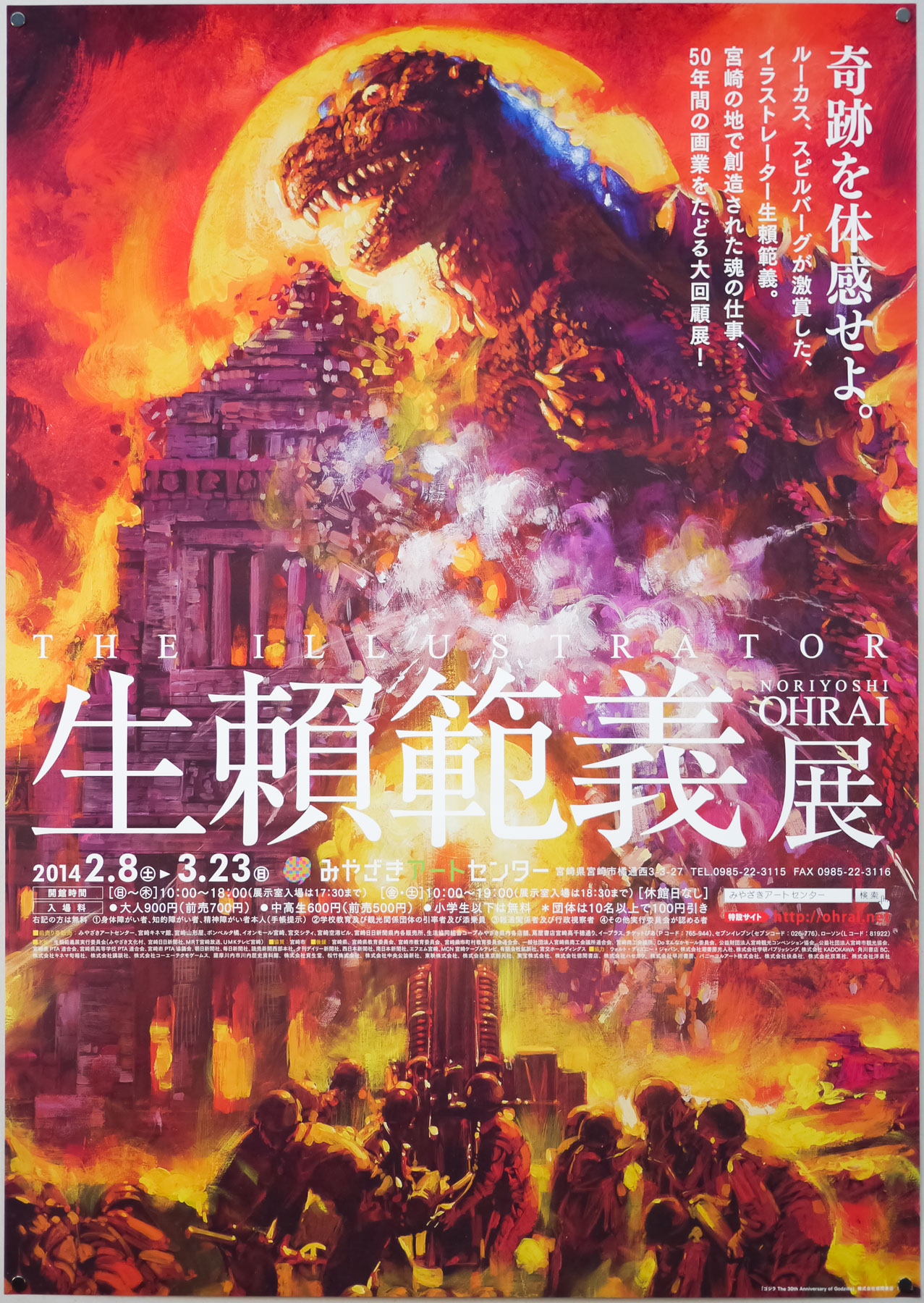
One of four B2 posters used to advertise the Noriyoshi Ohrai exhibition, featuring one of many paintings that the artist did of the King of the Kaiju, Godzilla.
In March 2014 I flew over to Tokyo and then a few days later took an internal flight down to the Island of Kyushu with my friend and fellow poster collector Toru Onozatu (AKA Poster-man). The exhibition was located in the Art Center in downtown Miyazaki, which is the city that Ohrai has called home since 1973. We were very lucky to have been given a personal tour by the curator Tatsuya Ishida who kindly guided us around the exhibition’s multiple rooms that were spread over two floors. I recorded his comments as we walked and they are featured throughout this article.
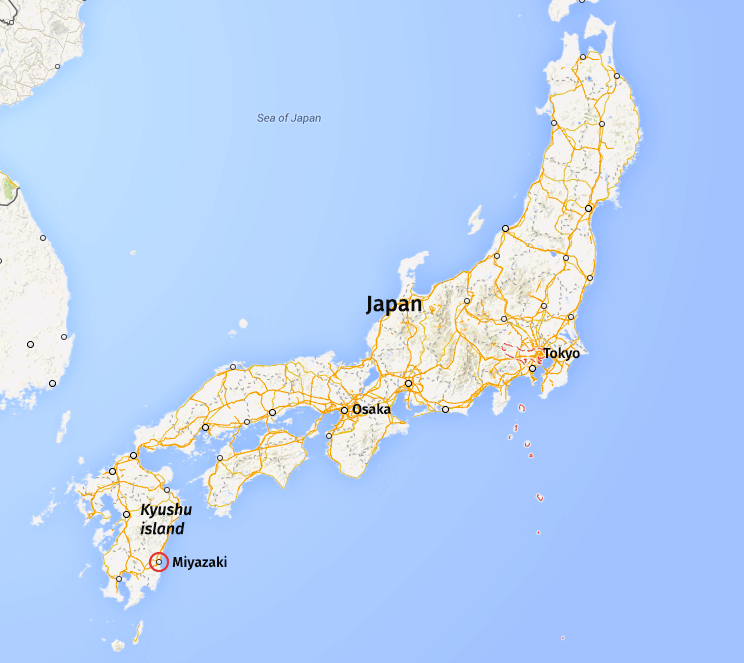
A map of Japan showing the location of Miyazaki on the Island of Kyushu at the bottom of the country.
The exhibition featured almost all of Ohrai’s original art for film, book covers, video games, editorial work, biology text books and more, with only a tiny handful of the film art missing (some with their current location unknown). A lot of the art still belongs to Ohrai himself but some of it had been flown to Miyazaki from collectors including George Lucas (for some of the Star Wars pieces), as well as the Japanese studio Toho who lent several of the Godzilla artworks to the exhibition. It was certainly a unique situation that all of these paintings were gathered together under one roof.
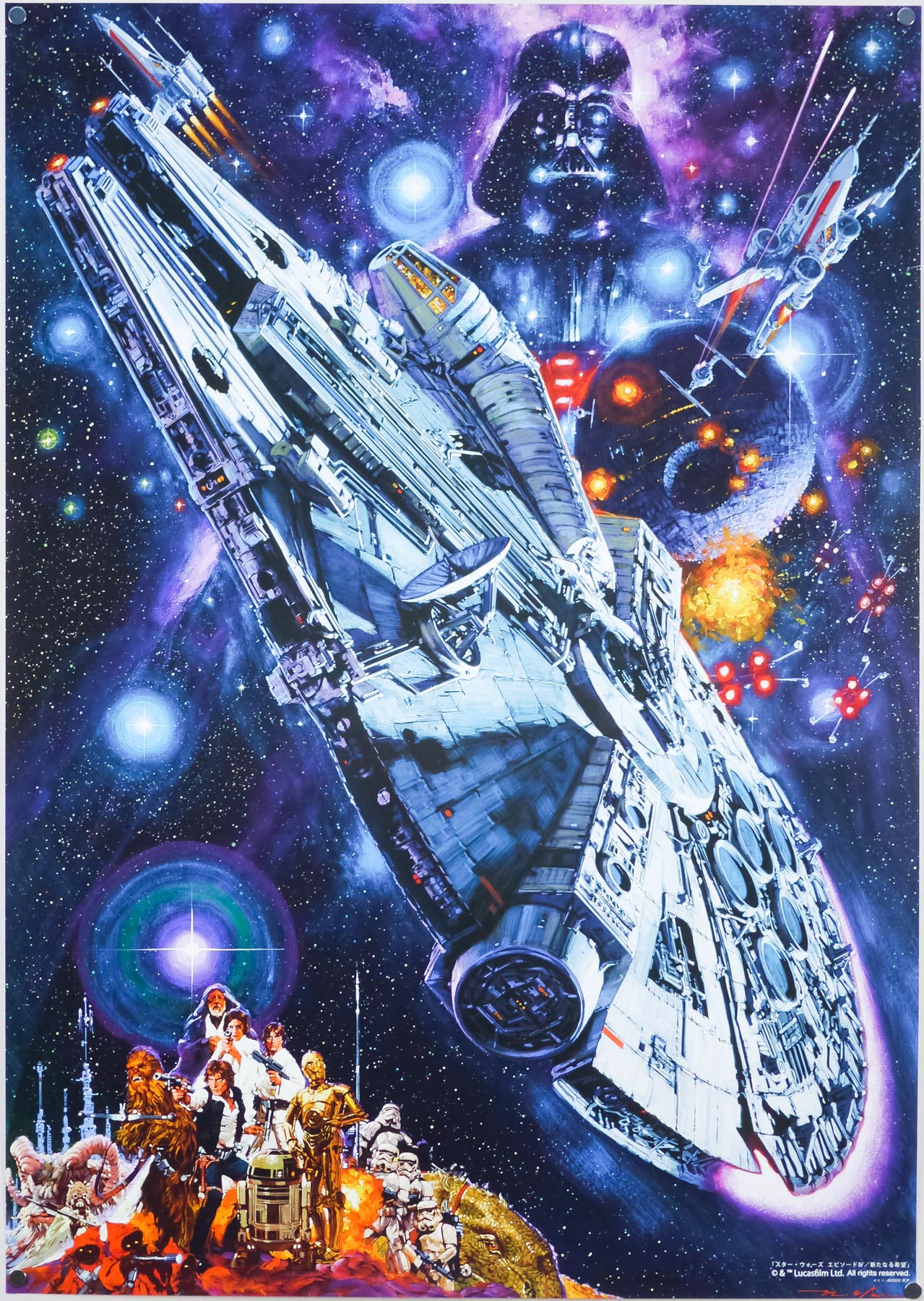
A Star Wars poster printed in Japan to commemorate the release of a dubbed version of the original film in 1982, painted by Noriyoshi Ohrai. The huge (around A1 size) original art was on display at the exhibition and this small print was available to buy in the shop.
The exhibition began with a room containing a floor-to-ceiling pyramid of paperback novels and magazine covers that Ohrai worked on over a 30 year period, and this was surrounded by walls covered in framed posters of Ohrai’s film and commercial work. It was certainly a thrill to see them all together like that. The rest of the exhibition, in which photography was not permitted (I’ve included a handful of cheeky snaps), went through themes, beginning with Godzilla, moving onto book and magazine covers and a display of gigantic, incredibly detailed video game cover artworks. Also featured were some incredibly impressive portraits of famous figures, plus a room featuring Ohrai’s ‘Beauties in Myths covers for SF Adventure magazine. The last room contained posters for the Star Wars franchise, plus more film posters and several war-related paintings.
I wanted to share the visit with Film on Paper readers and the following pictures will hopefully give you an idea of what this memorable experience was like, plus I’ve also had the biography from the back of the exhibition catalogue translated into English and that is included at the end. Also featured are several photographs of pages from the catalogue since I was unable to actually photograph the artwork.
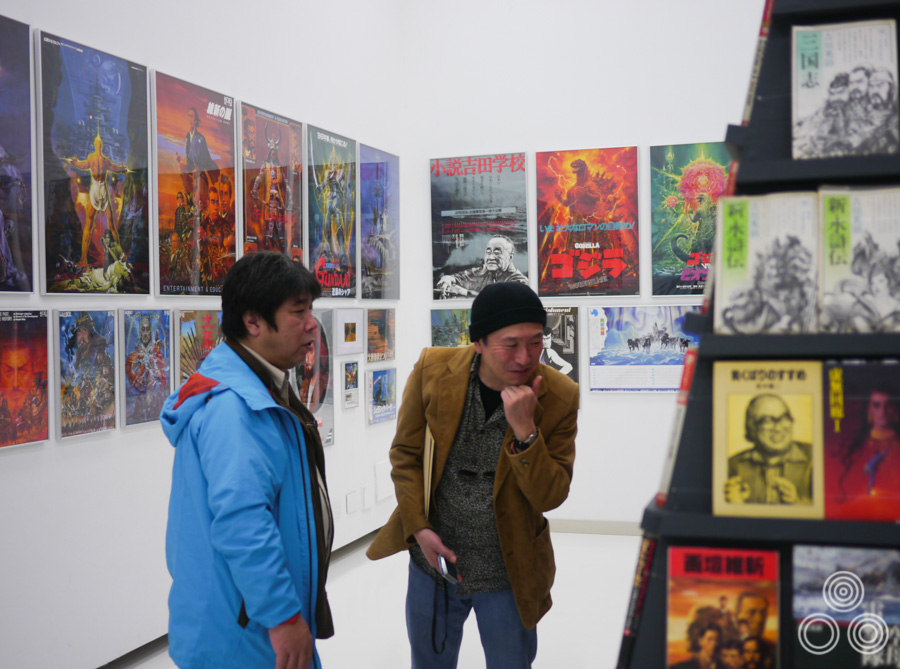
Exhibition director Tatsuya Ishida (left) and my friend, and fellow collector, Toru Onozato examine some of the many book covers painted by Ohrai in the first room of the exhibition.
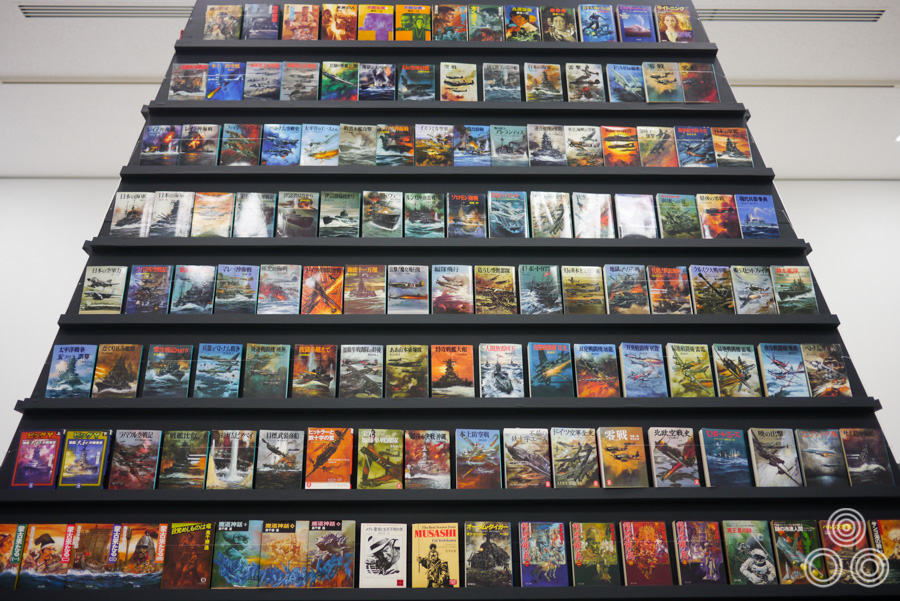
One side of the book covers pyramid in first room of the exhibition, these being mainly war related imagery.
Mr Ishida explained to Toru and I that Ohrai worked on about 1300 book covers during his career and that the pyramid of books contained only about a third of his total output. In 1986 alone he worked on 130 book covers and he was completing a new illustration every 3 days or so.
For each book he would read it first and then think about what would make the best cover. He wasn’t just being given a title and then making something up. Mr Ishida explained that Master Ohrai did quite a lot of work for a few specific book authors and he developed a particular style for each one so that their books became instantly recognisable. In the 1970s he would get paid about 150000 Yen for each book cover.
Noriyoshi Ohrai was born in Akashi City, Hyogo prefecture in 1935. His family was evacuated to Sendai City, Kagoshima Prefecture after their house was bombed during the war and Mr Ishida told us that Ohrai went to an art university in Tokyo but dropped out after a while. Mr Ishida said, “he told me that the reason why was because he felt he had nothing more to learn from the teacher”.
Ohrai moved to Miyazaki from Tokyo in 1973 because it’s his wife’s hometown. He bought an old farmhouse and converted part of it into a studio.
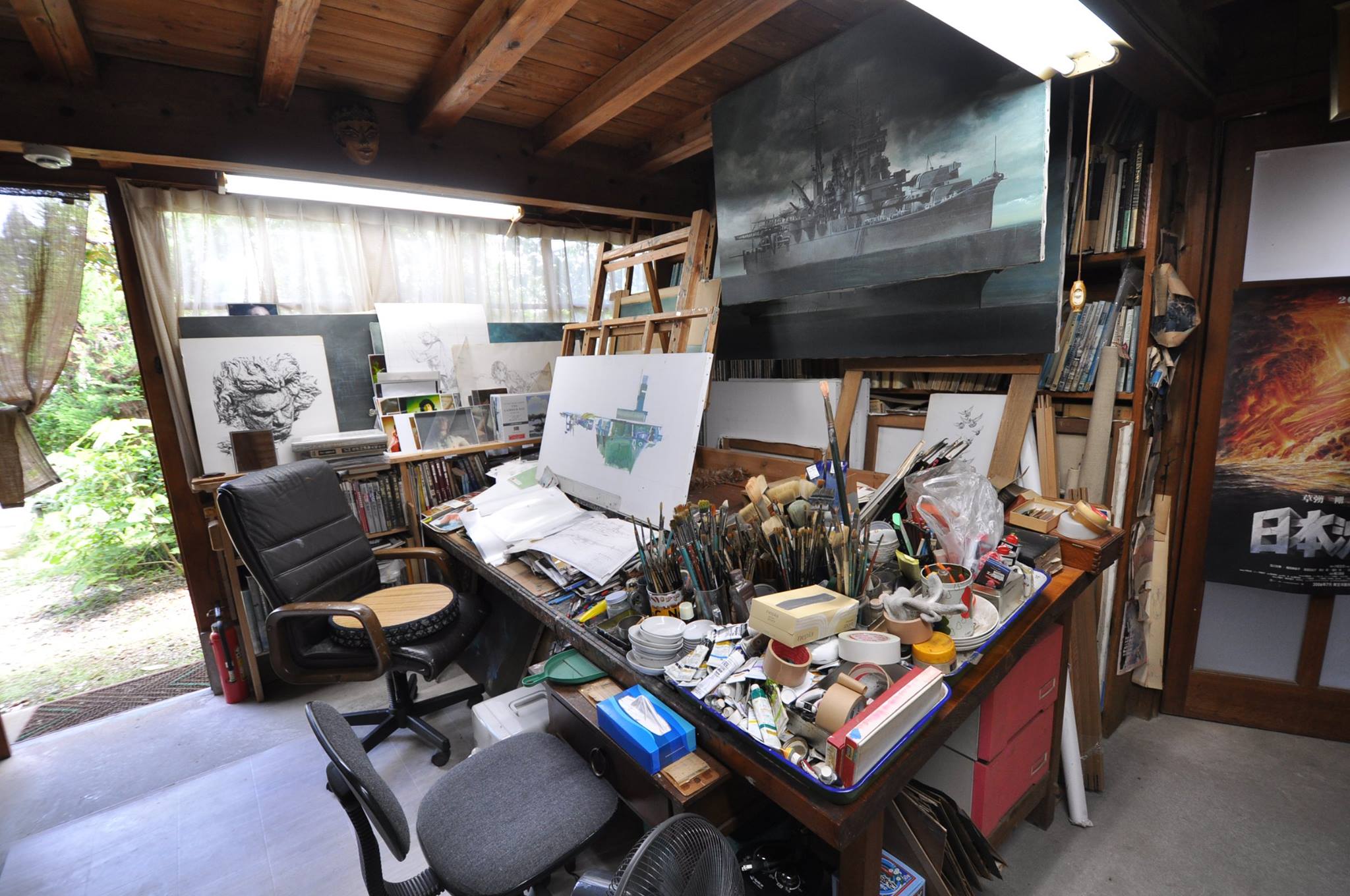
A view inside Ohrai’s studio in Miyazaki. This photo was on display in the exhibition and I’ve taken this from the Facebook page for the exhibition.
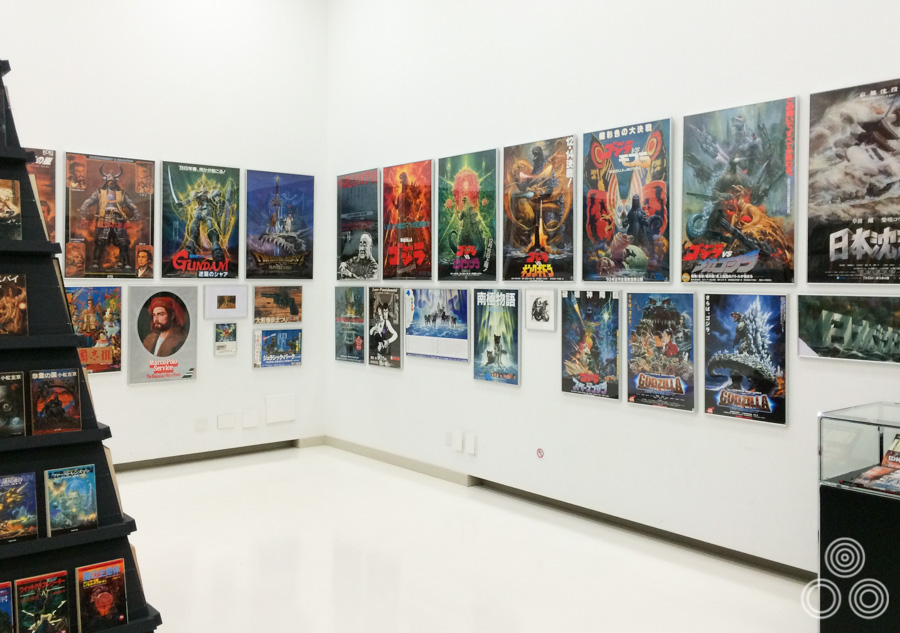
One side of the room of the exhibition that contained printed posters of Ohrai’s work, including several Godzilla ones.
Ohrai started out doing illustrations for newspapers then moved onto book covers and eventually started doing more and more posters after the huge success of the one he painted for The Empire Strikes Back.
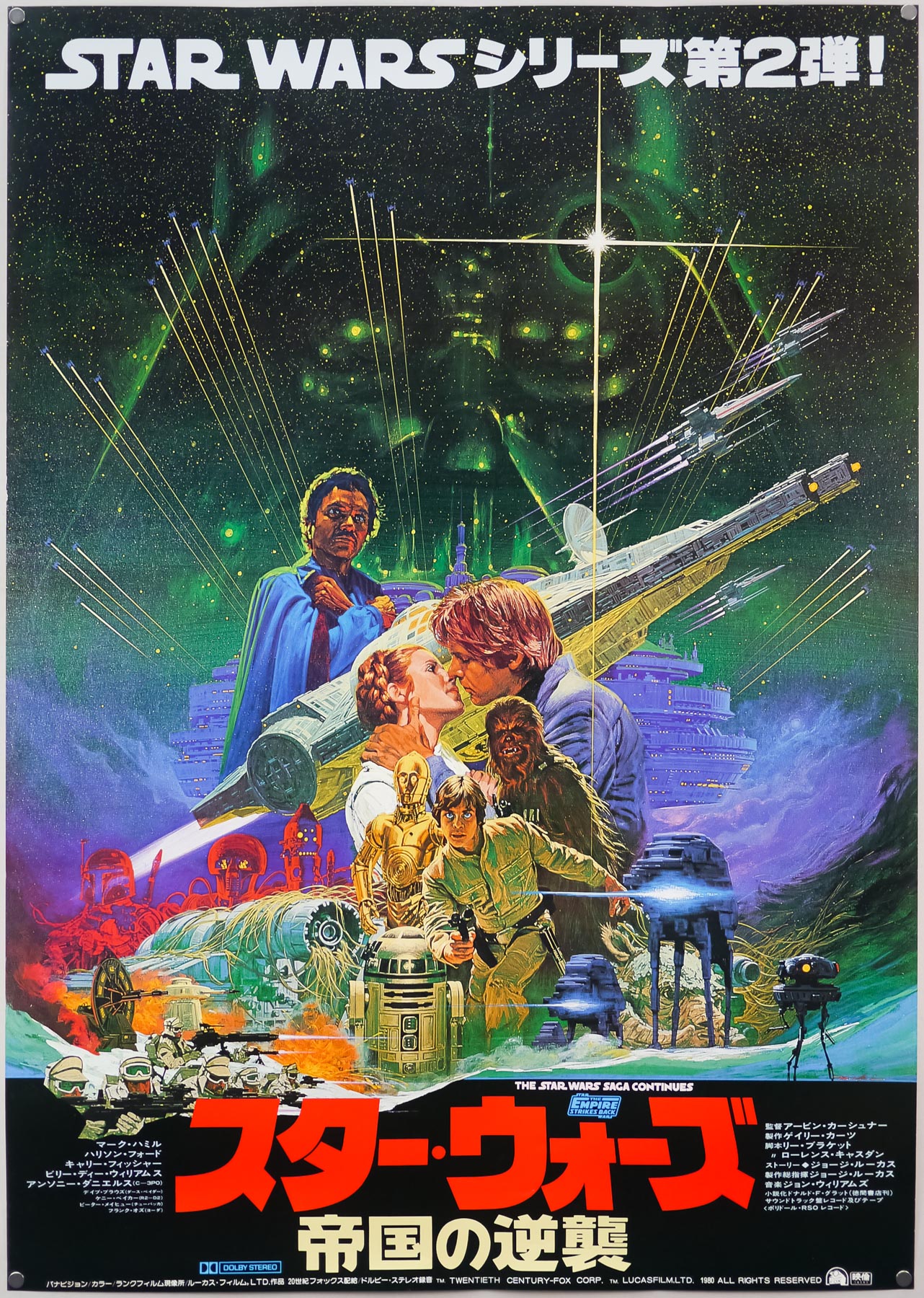
The gorgeous Japanese B1 poster for The Empire Strikes Back, painted by Ohrai. This poster led to many more film-related commissions.
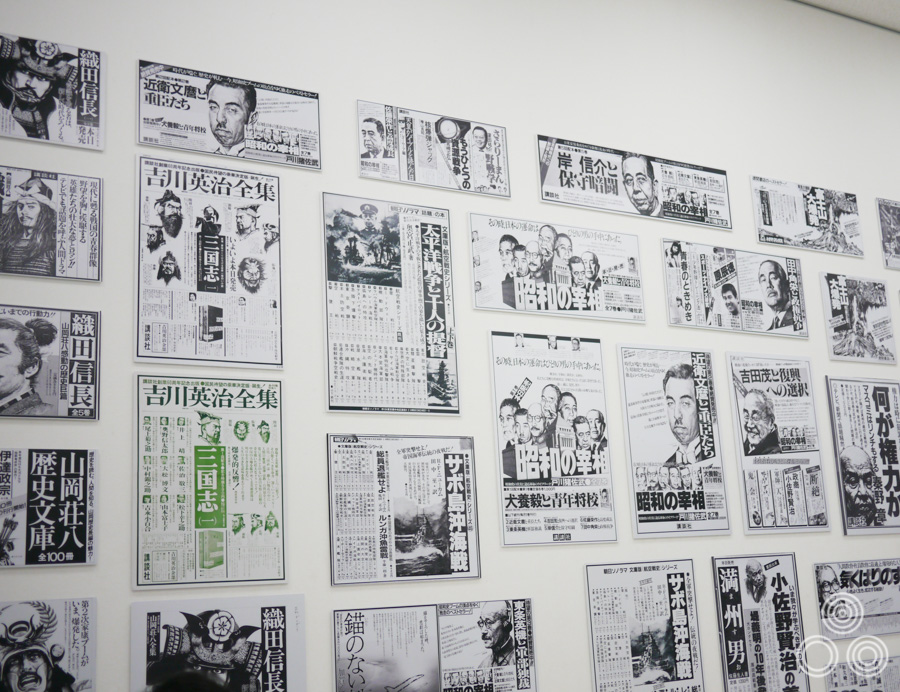
Large reproductions on the newspaper adverts that Ohrai painted during the early part of his career. These were displayed in the first room of the exhibition.
Ohrai’s first film poster was for the 1973 film Japan Sinks and he painted it in his new studio.
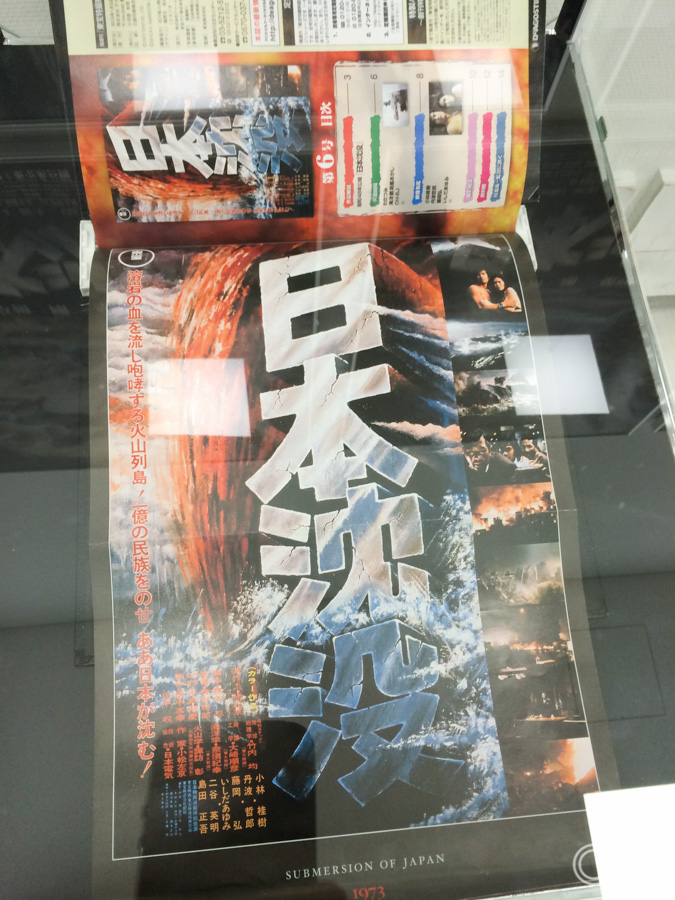
A display case containing a printed copy of Ohrai’s very first film poster for the original Japan Sinks (Nihon Chinbotsu) that was done in 1973
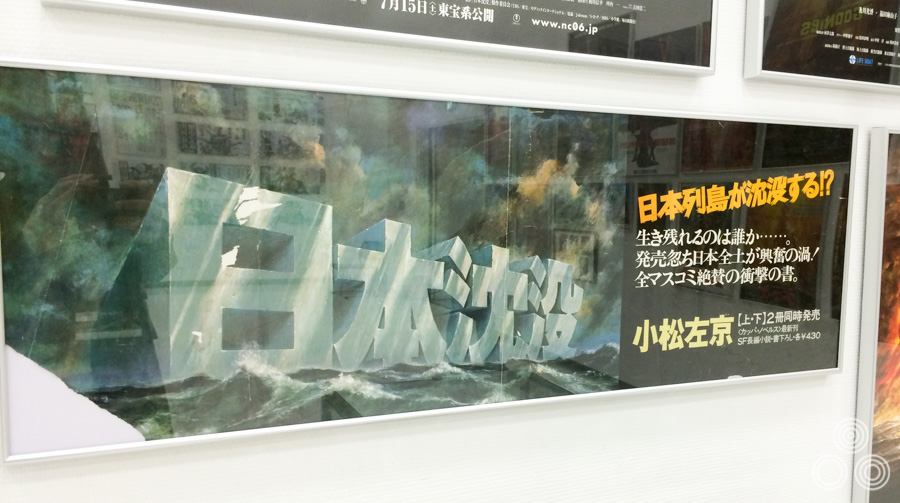
Another version of Ohrai’s very first film poster for the original Japan Sinks (Nihon Chinbotsu) that was done in 1973
Mr Ishida explained that the turning point for his work on film posters was definitely after George Lucas had asked him to illustrate one for The Empire Strikes Back. After that he was very much in demand.
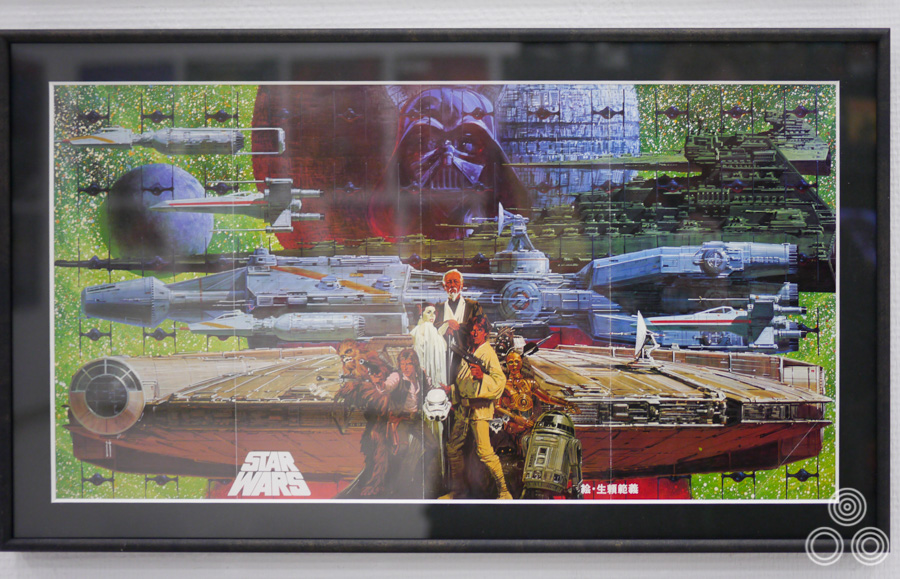
A Star Wars painting that Ohrai worked on for the release of the original Star Wars. This was included as a pull-out in a Japanese magazine.
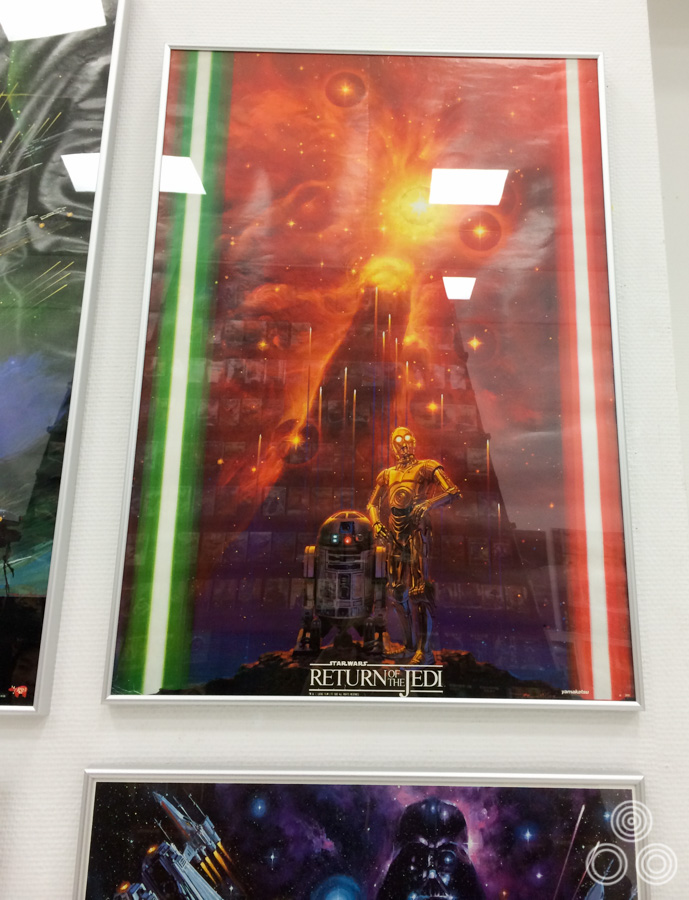
The gorgeous ‘Starfall’ painting that Ohrai worked on for a promotional poster to mark the release of Return of the Jedi in Japan.
Ohrai understood how a painting would look when printed at a certain scale, so he used certain techniques that meant he didn’t have to spend too long on details that wouldn’t be noticed when it was scaled down to book size.
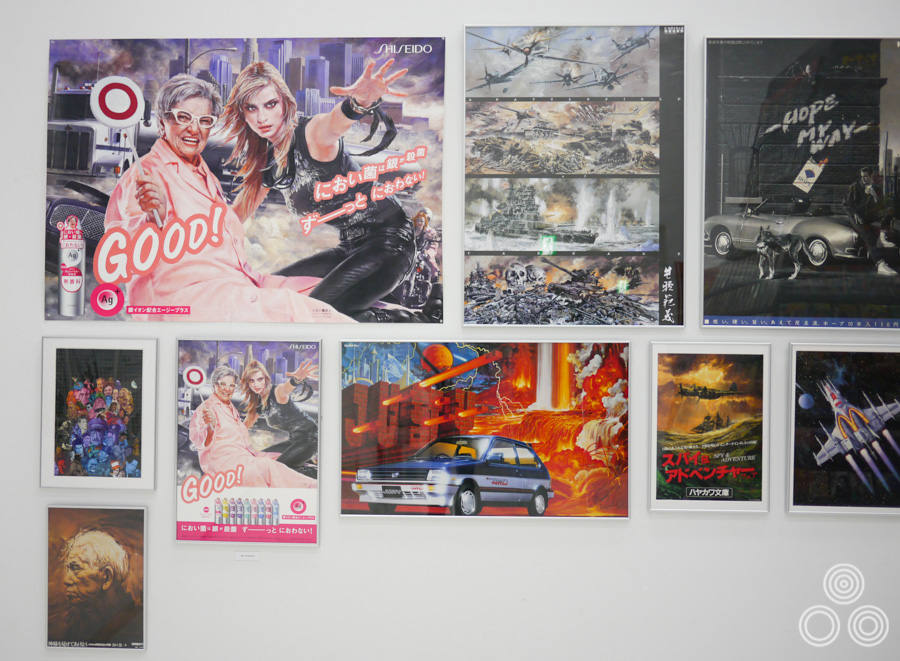
Some of the commercial advertising posters that Noriyoshi Ohrai worked on, displayed in the first room of the exhibition.
In the 1980s and 1990s there were some Japanese video game manufacturers like Koei and Konami who commissioned Ohrai to do elaborate paintings for their game covers. The actual paintings, which were on display , were huge and for each he would get figures like 1 million yen and more. Mr Ishida explained that the companies own the paintings outright so they kindly leant them to the exhibition.
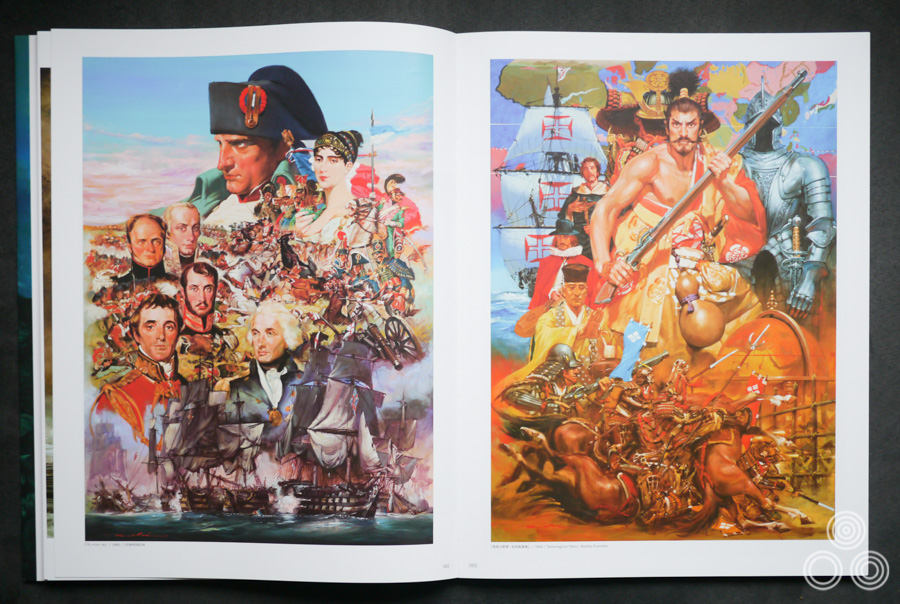
Two of the hugely detailed paintings that Noriyoshi Ohrai was commissioned to paint for Japanese video game publishers like Koei and Konami.
One of the first pieces of artwork on view in the exhibition was for The Return of Godzilla and Mr Ishida explained that Ohrai drew the buildings with perspective in the background and then he painted Godzilla right over the top of it, not around it. Apparently he would often do painting in layers like this.
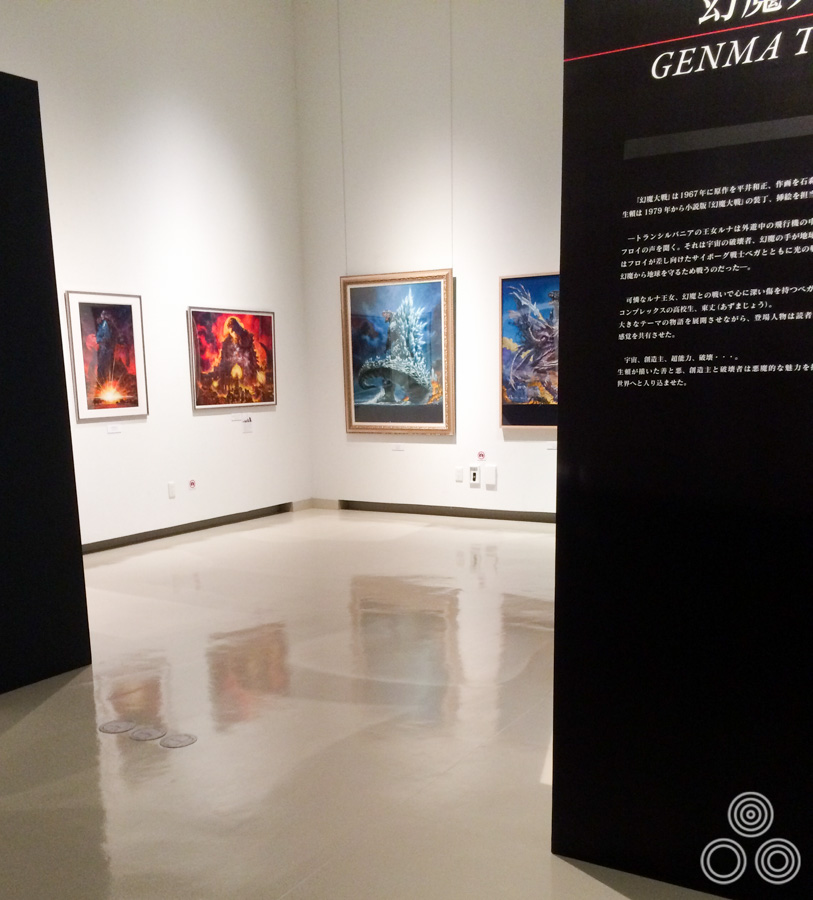
A view inside the main section of the exhibition which featured the original artwork by Ohrai, including these for Godzilla. Photography was not permitted of the artwork so this shot is a bit cheeky. My apologies to the museum staff!
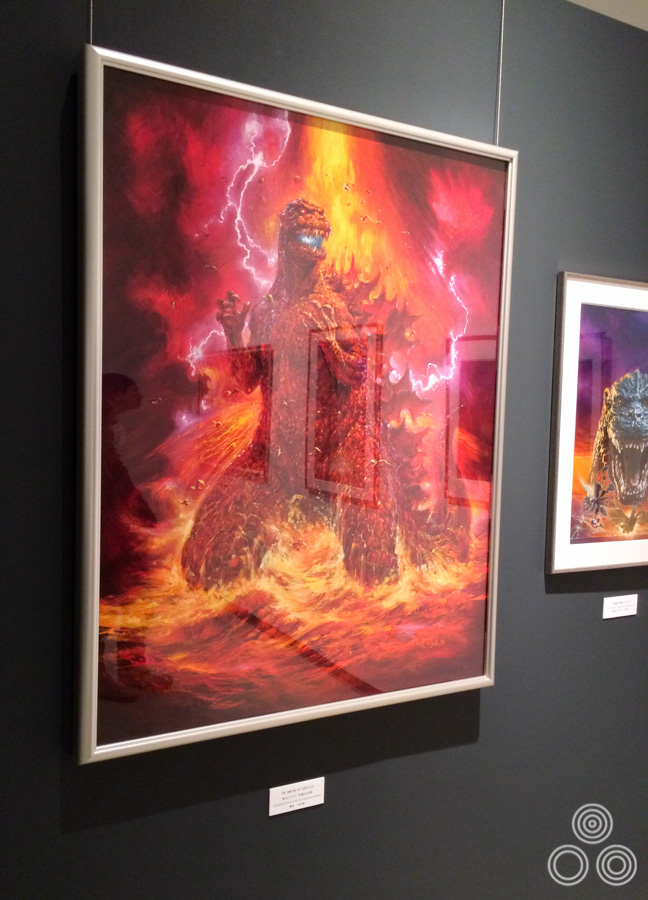
One of the many framed original Godzilla artworks by Ohrai inside the main section of the exhibition, this one painted for the Making of Godzilla (1985). Photography was not permitted of the artwork so this shot is a bit cheeky. My apologies to the museum staff!
Another Godzilla artwork on display was for Godzilla vs Mechagodzilla II (1993) and we were told that when the painting was sent to print the colours were darkened and you could definitely see the difference when looking at the original art. Also the logo covers some of the detail.
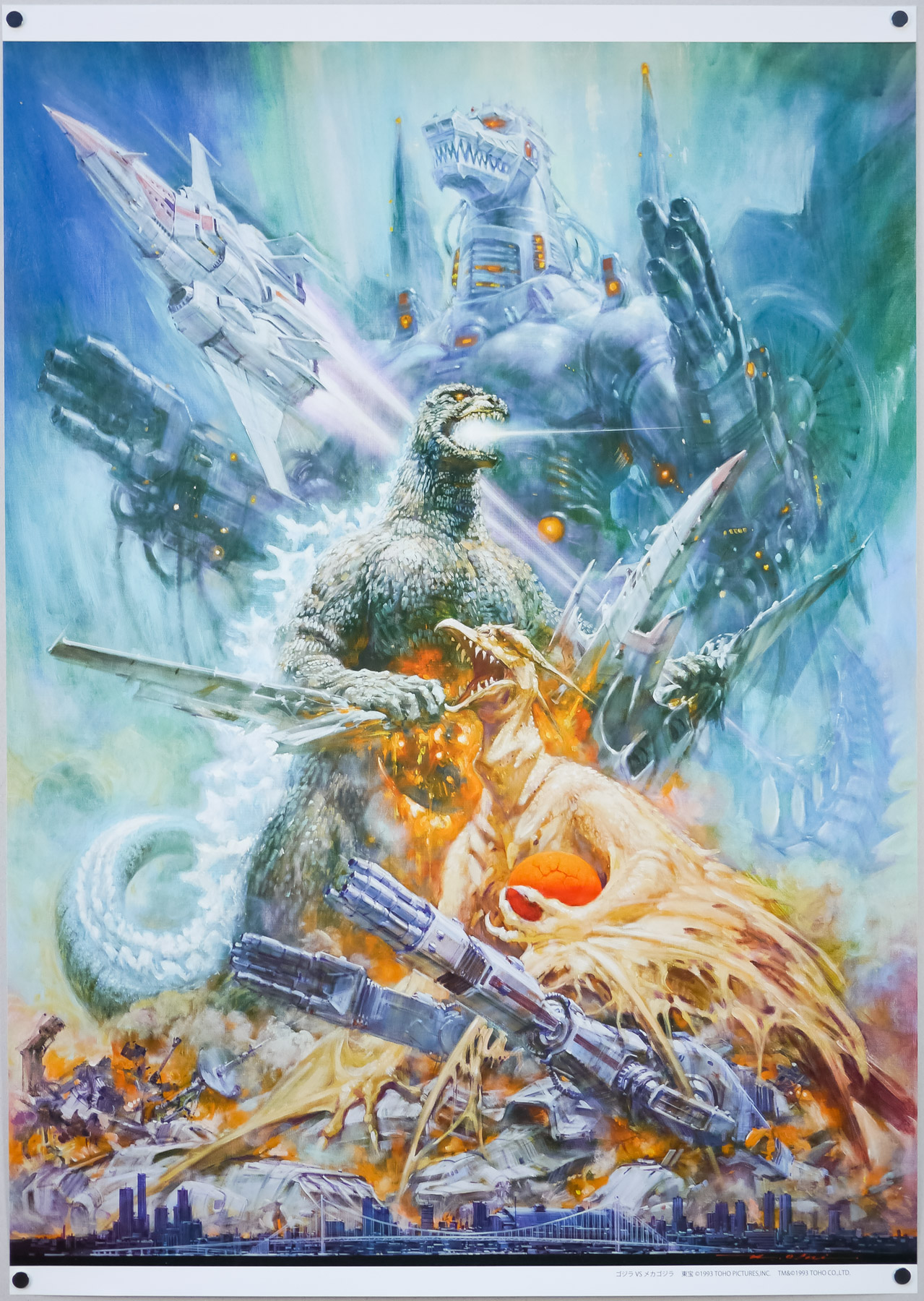
A print of the original artwork for a Godzilla vs Mechagodzilla II painted by Noriyoshi Ohrai. The huge (around A1 size) original art was on display at the exhibition and this small print was available to buy in the shop.
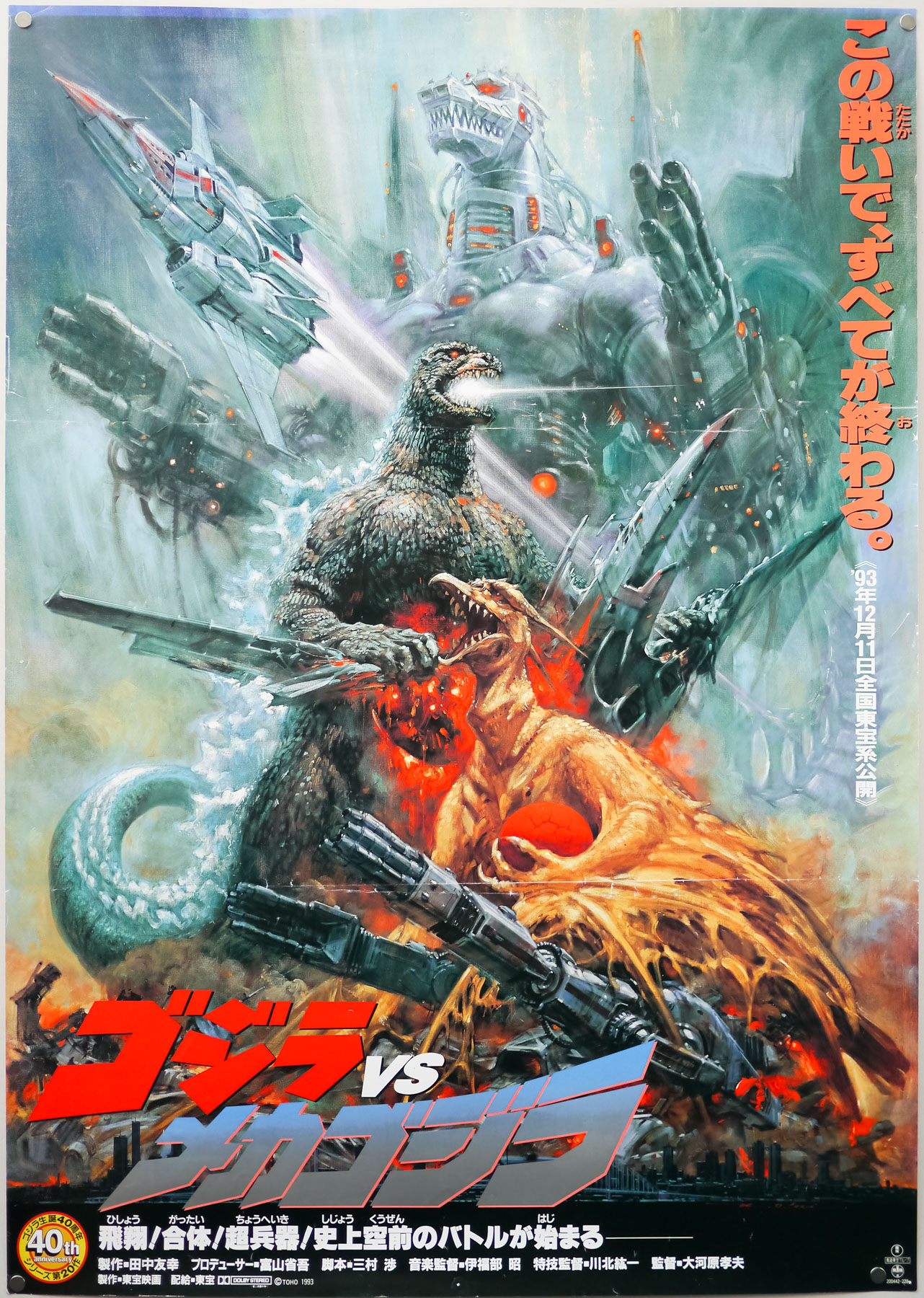
The Japanese B1 for Godzilla vs Mechagodzilla II. Note the darkness of the colours compared to the original art above, a result of the printing process.
There were lots of paintings of spaceships, used for book and magazine covers, on display and Mr Ishida explained that they were almost all from Ohrai’s imagination. He was a massive fan of the film Alien and was very inspired by it.
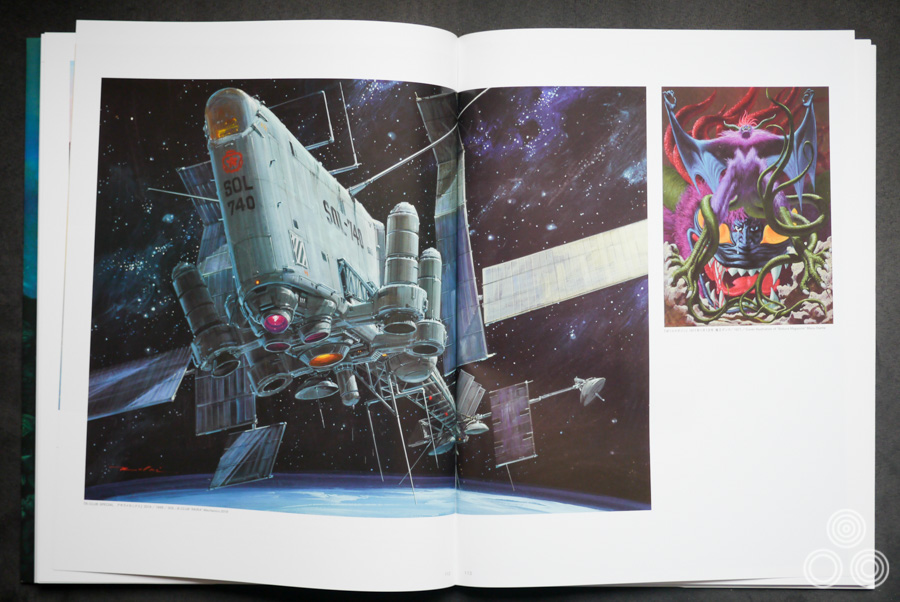
Two book covers by Noriyoshi Ohrai shown in the exhibition catalogue. The one on the left was painted for an Akira special in the Japanese B-club magazine. These were both on display in the museum.
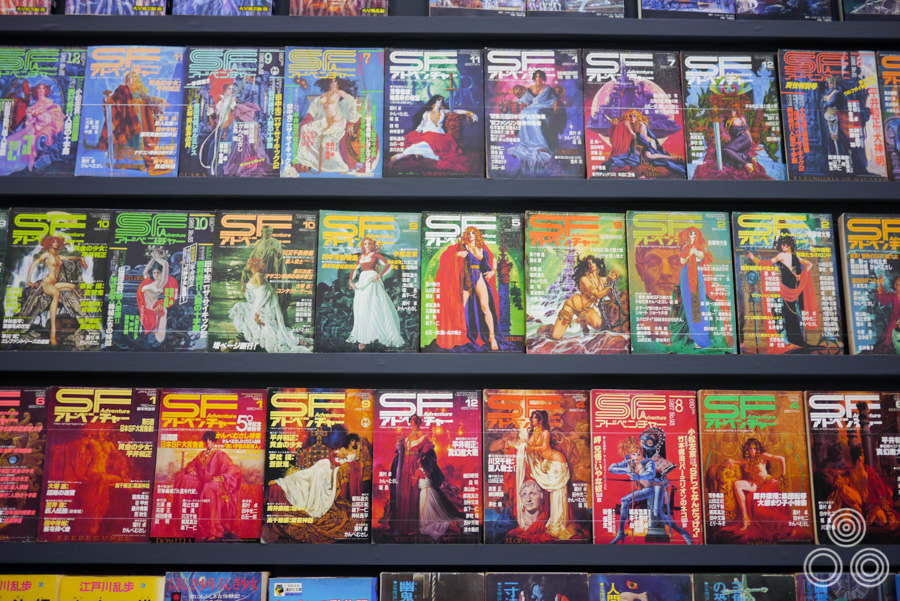
A close up of just some of the covers of SF Magazine that Ohrai painted that featured his ‘Beauties in Myths’.
One of the rooms contained all of the paintings that Master Ohrai worked on for the SF Adventure magazine in Japan that was dubbed Beauties in Myths. He was commissioned to do a series of paintings that started in 1980 and lasted for almost 8 years. The theme he chose was depicting famous women from history and myths, like Queen Elizabeth I and Messallina, wife of Roman emperor Claudius, alongside modern military technology and sci-fi apparatus. The paintings were absolutely stunning and crammed with detail. The actual magazines were printed at around A5 size so Ohrai was able to hide various details in the art (see below).
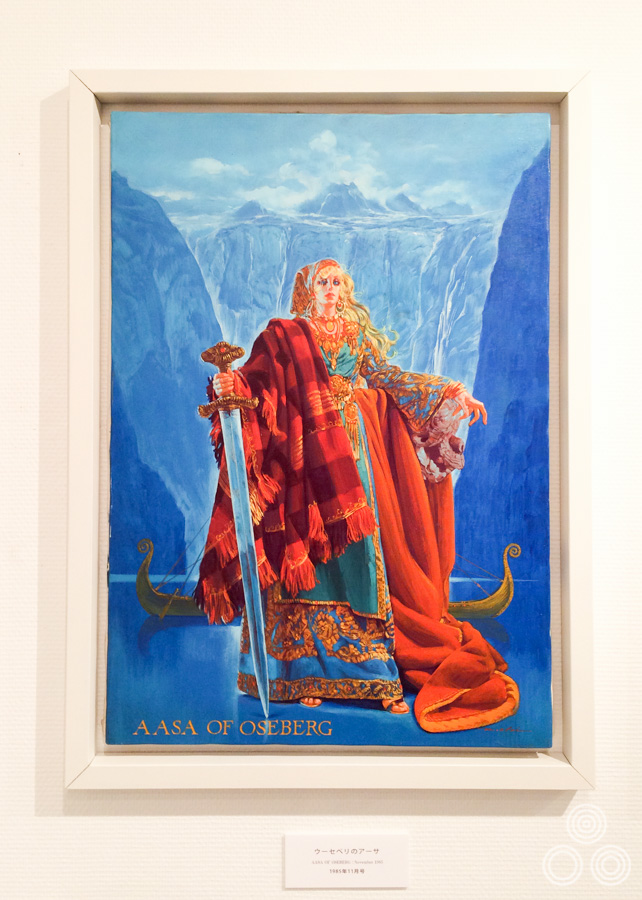
Aasa of Oseberg, one of the Beauties in Myths that Noriyoshi Ohrai painted for a series of SF Magazine covers.
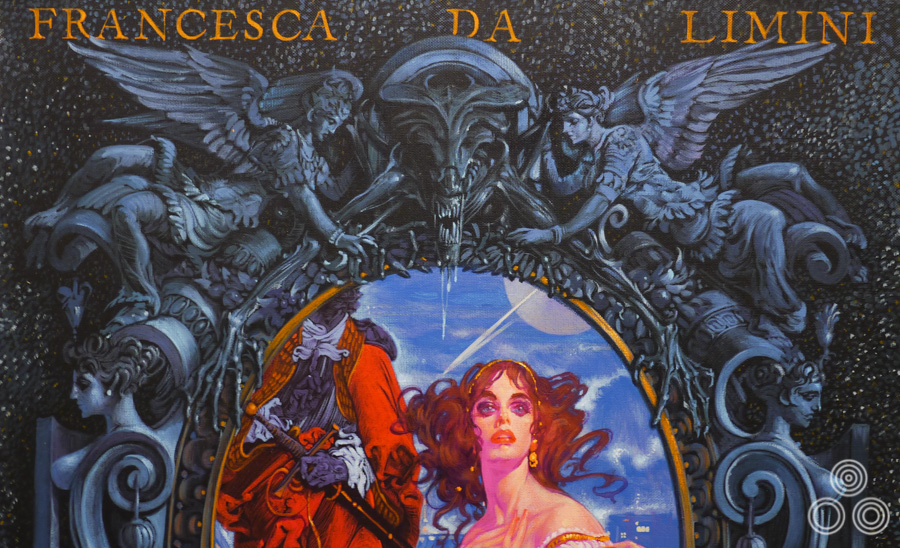
Close-up of Francesca Da Limini, one of the Beauties in Myths that Noriyoshi Ohrai painted for a series of SF Magazine covers. This illustrates some of the detail that Ohrai put into the work, like this cheeky Alien queen at the top.
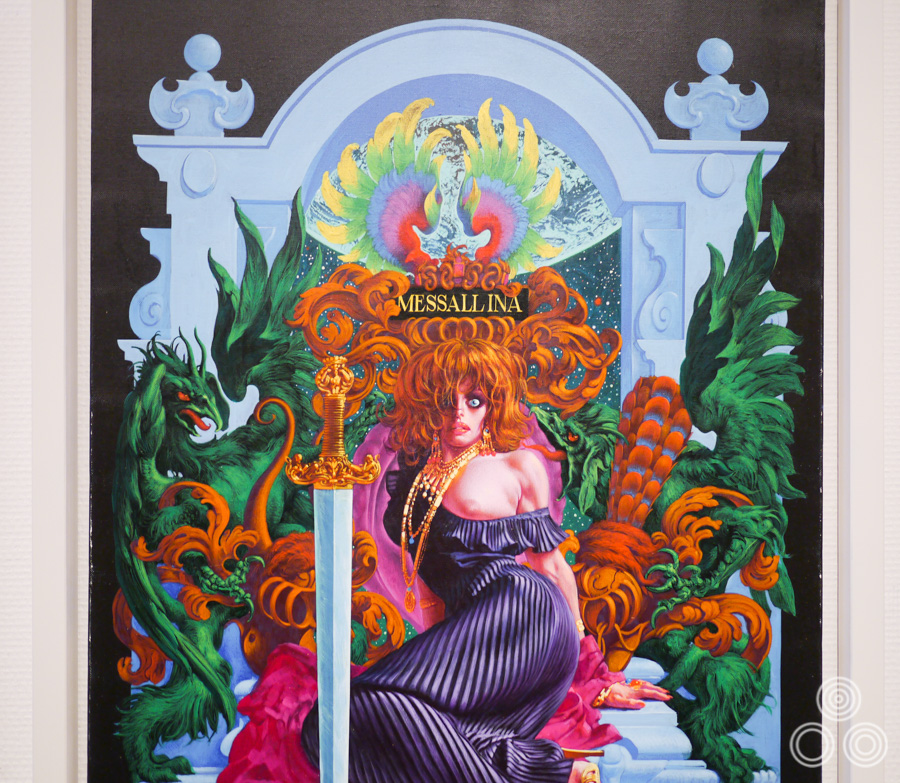
Close-up of Messallina, one of the Beauties in Myths that Noriyoshi Ohrai painted for a series of SF Magazine covers.
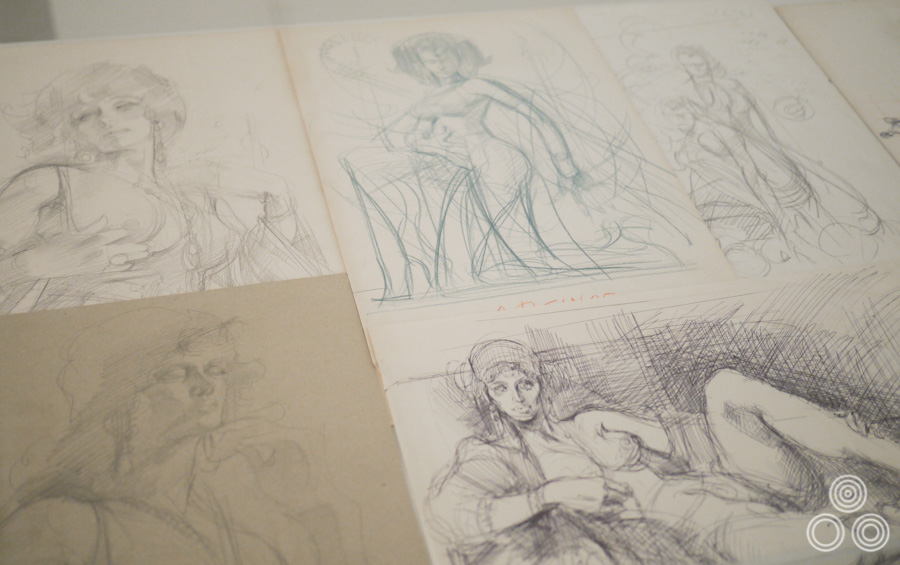
Sketches for some of the Beauties in Myths that Noriyoshi Ohrai painted for a series of SF Magazine covers.
Ohrai painted a lot of scenes and characters in space and he liked to experiment with different colours. His space scenes were often either green-tinged or purple/pink.
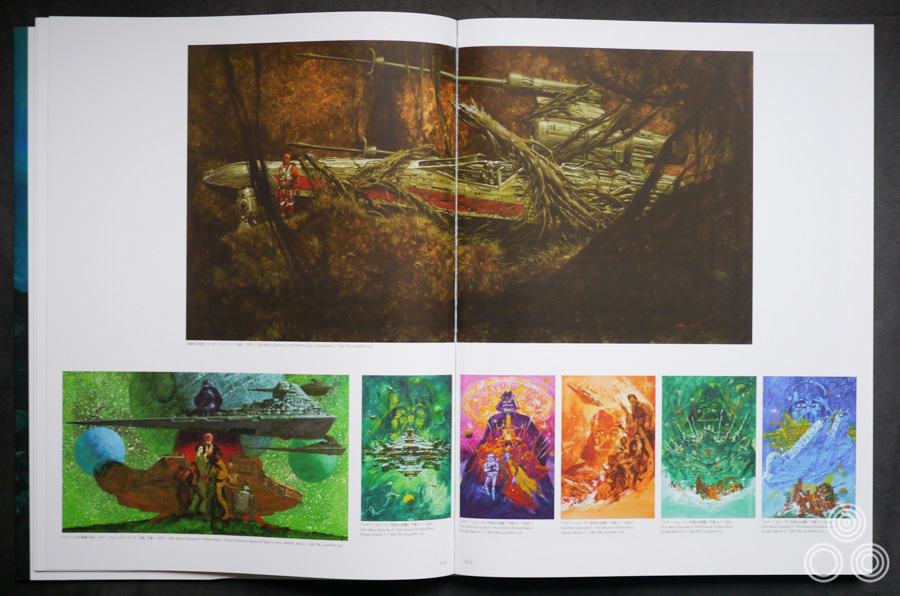
Several paintings that Noriyoshi Ohrai worked on for the original Star Wars Trilogy. The top image was used to promote the novel Splinter of the Mind’s Eye.
For the drawings of old battleships when he couldn’t find a reference photo he would research the actual engineering plans and so his drawings are incredibly accurate.
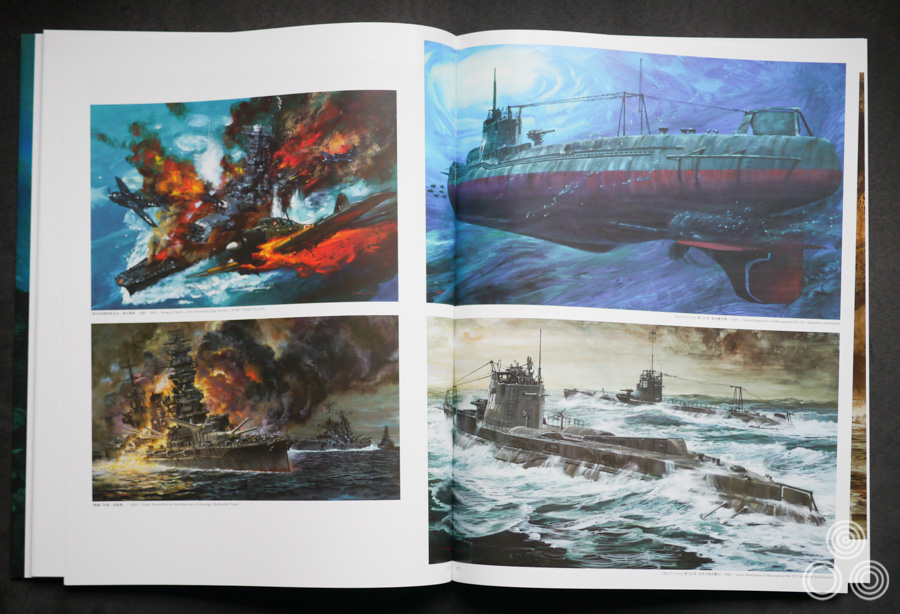
Some of hundreds of war-related paintings that Ohrai worked on for book covers and other uses, such as model kit boxes.
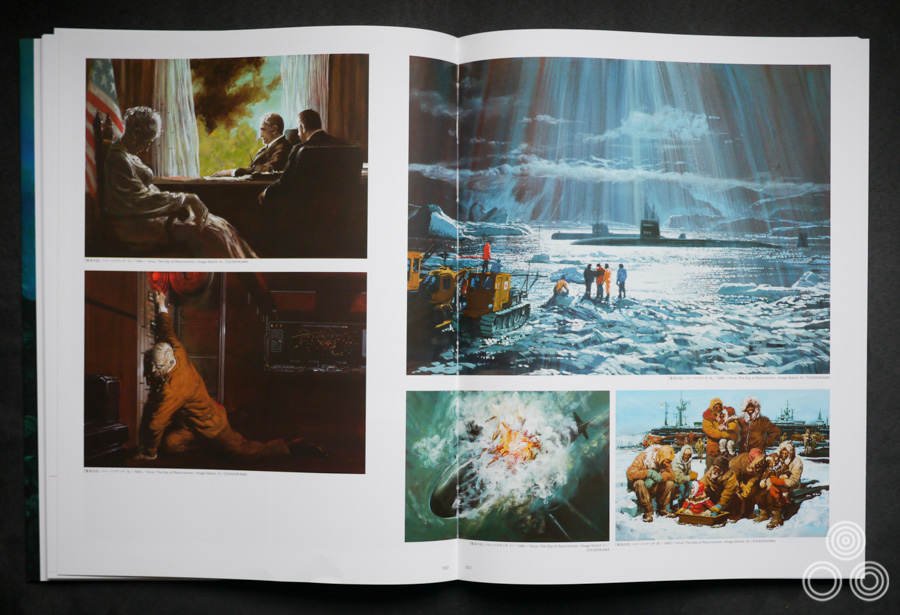
A few of the excellent concept paintings that Ohrai was commissioned to paint for the Japanese film Virus, directed by Kinji Fukasaku
Mr Ishida said that there are many artists of Ohrai’s generation and of his skill level that traveled to cities like New York, establishing big studios and holding prestigious exhibitions. Ohrai wasn’t interested in the fame or earning lots of money, he just wanted to paint; “He’s a real artist without any greed”.
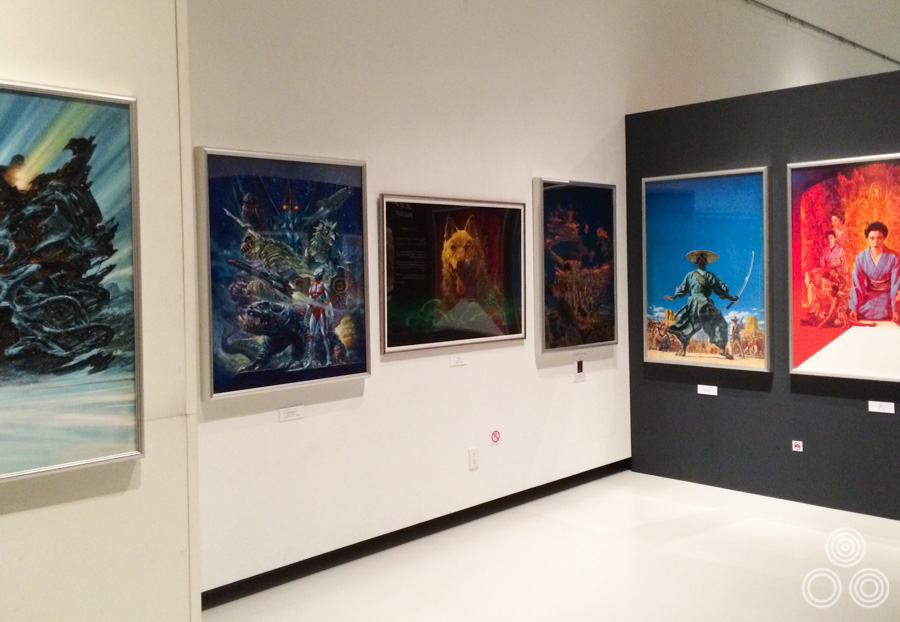
A view inside the section of the exhibition featuring film poster artwork. Photography was not permitted of the artwork so this shot is a bit cheeky. My apologies to the museum staff!
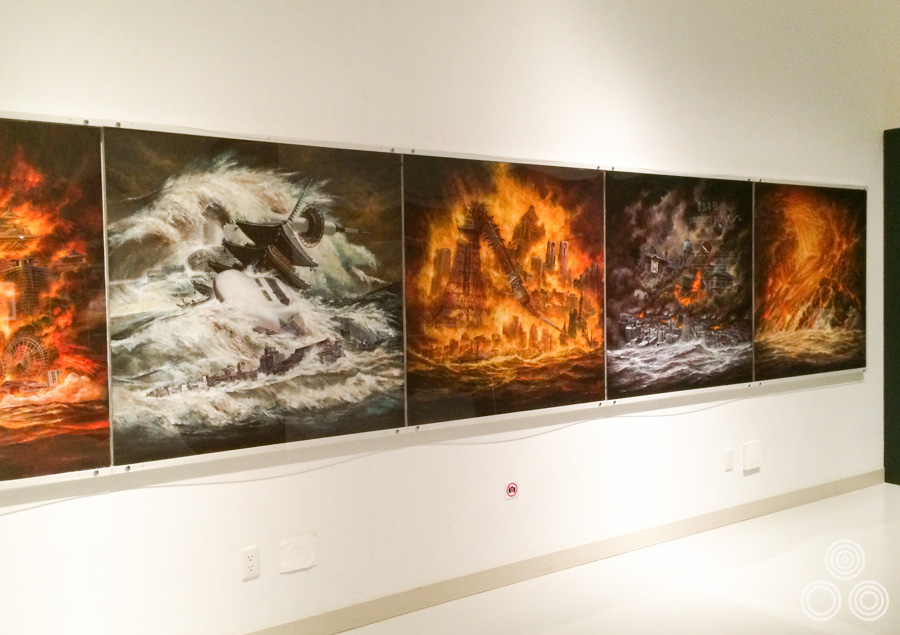
A shot of large paintings that Ohrai produced for the remake of Japan Sinks (2006), each showing the destruction of famous landmarks. Photography was not permitted of the artwork so this shot is a bit cheeky. My apologies to the museum staff!
Ohrai still owns most of the artwork, with the exception of the Godzilla paintings, which are the property of Toho studios, and the game covers that are owned by the companies.
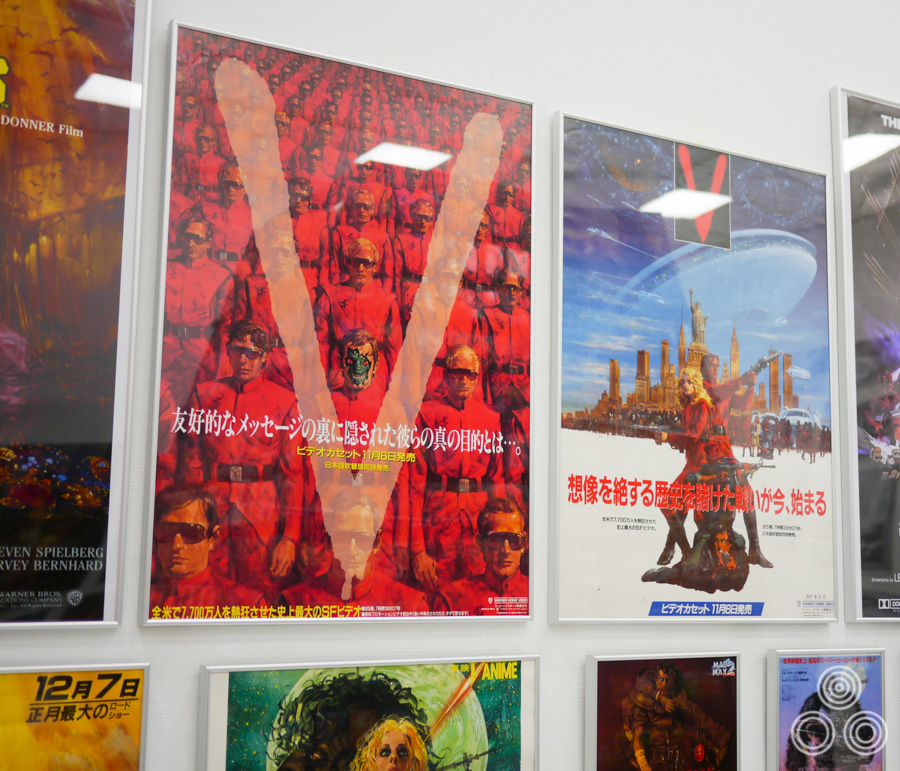
Two framed posters for the Japanese video release of the original 1980s TV series ‘V’ that were on display in the first room of the exhibition.
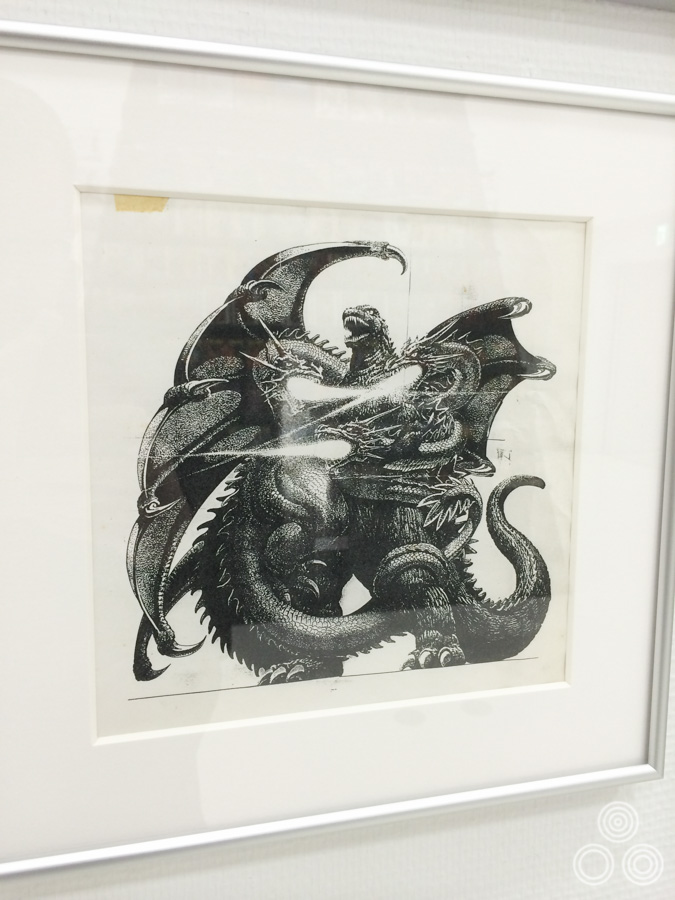
A pen illustration of Godzilla fighting three-headed King Ghidorah. I’m unsure what this was used for but it may have been a sketch for the film poster.
Ohrai never left Japan once so he painted many things from his imagination. He had a brain aneurism in 2011 and he’s okay now but he can longer draw sadly.
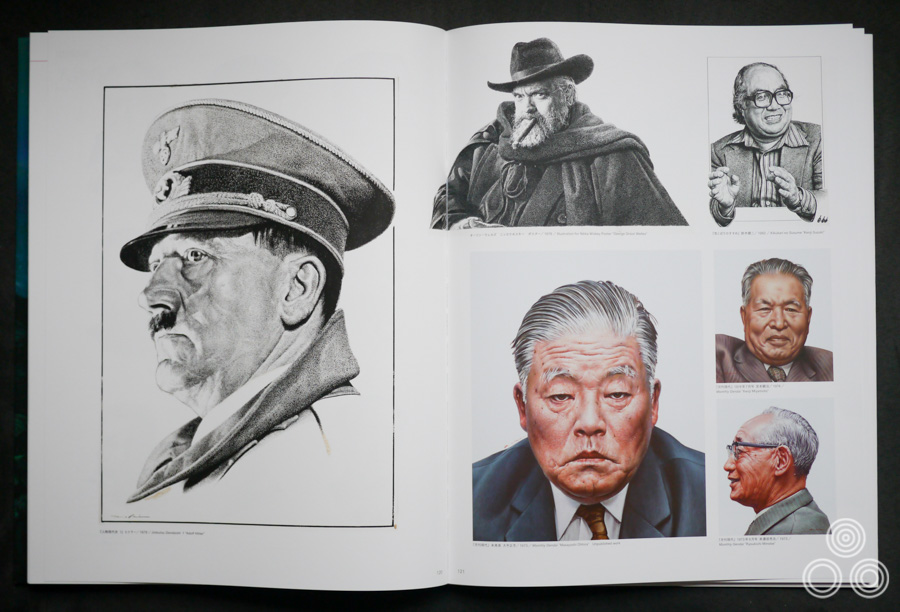
Some of the excellent portraits that Noriyoshi Ohrai painted for various uses, including magazine editorials.
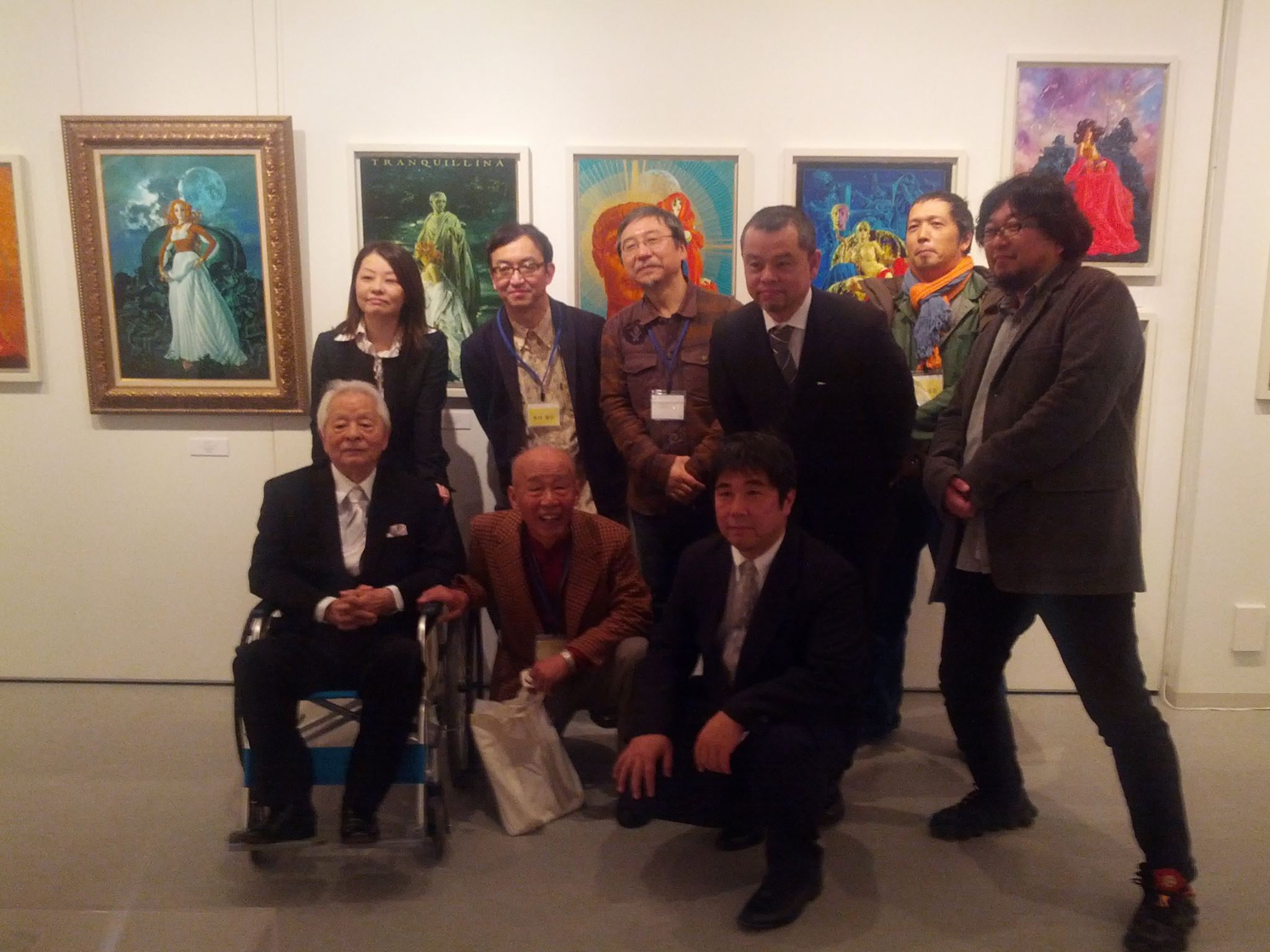
A shot taken from the exhibition’s Facebook page which shows a visit from Master Ohrai himself (in the wheelchair) with his son Taro third from the right and exhibition director Tatsuya Ishida centre bottom.
After finishing our guided tour from Mr Ishida, Toru and I were presented with the four B2 posters used to advertise the exhibition (and not for sale to the public), which was very generous and I’ve added these to the Film on Paper poster archive. There was also a shop from which were able to purchase the exhibition catalogue as well as a few other goodies like artwork prints, postcards and more.
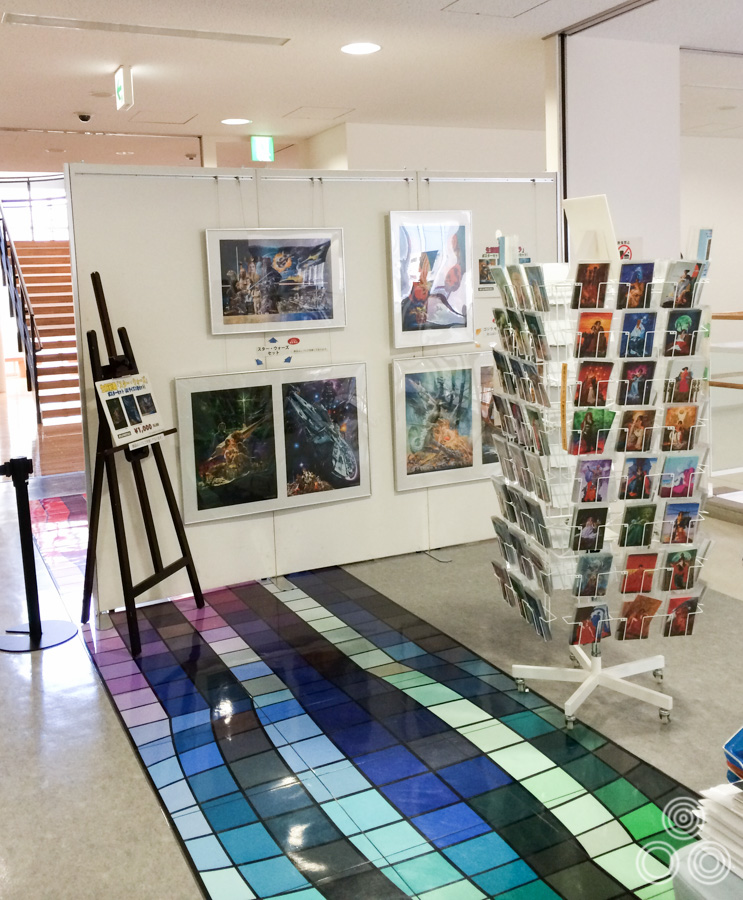
A view of the exhibition shop, including the two sets of artwork posters that I have detailed in the Film on Paper collection.
The next day Toru and I returned to the exhibition for a second look around without Mr Ishida to soak in the artwork once more. It will always be up there as one of the most memorable art exhibitions I have ever seen and if the exhibition is ever repeated I urge all Film on Paper readers to try and attend.
————————————
To see the other posters I’ve collected by Ohrai click here.
———————————–
Noriyoshi Ohrai Biography
The exhibition catalogue features an extensive biography at the back but, frustratingly for me, it’s all in Japanese. My good friend Brian who has lived in Japan for several years helped to translate the majority of it and I felt it was worthwhile publishing it. The translation below features several footnotes.
November 1935 (Showa era year 10[1])
Noriyoshi Ohrai is born in Akashi City, Hyogo Prefecture.
1945
Evacuated to Sendai City, Kagoshima Prefecture (present day Satsumasendai City)[2].
1951 (Showa 26)
Entered Kagoshima Prefectural Sendai High School (Japanese name: Kagoshima kenritsu sendai koutougakkou)
1954 (Showa 29)
Entered a painting course in the Fine Arts Dept of Tokyo University of the Arts. His major was oil painting.
1957 (Showa 32)
Dropped out of university.
1960 (Showa 35)
Opened his first solo oil painting exhibition in Ginza.
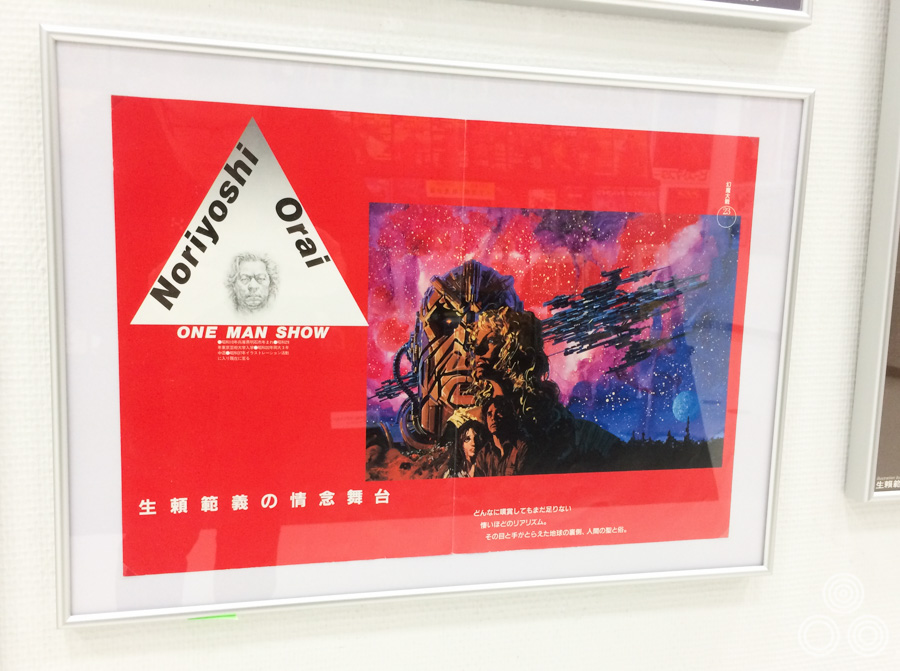
An advert for the first and only previous exhibition that Ohrai has held of his work in Tokyo, 1981.
1962 (Showa 37)
Married Yasuko Yamada, his friend’s younger sister. Started working as an illustrator for clients such as the Tokyu Agency, doing newspaper advertisements and magazine illustrations.
1966 (Showa 41)
Was in charge of the illustrations for a full-page ad in the Asahi Shimbun newspaper for editions of Eiji Yoshikawa’s Complete Works and Romance of the Three Kingdoms, published to coincide with the 60th anniversary of Kodansha’s founding. [3]
1968 (Showa 43)
Was commissioned by publishers Gakushū Kenkyūsha to provide the illustrations for an illustrated reference book, ‘Modern Family Medicine.’ When visiting Shinshuu University to collect materials for the work, he used an electronic microscope that had just been introduced and was able to see inside the human body.
Main works (published):
‘Modern Family Medicine’
Gakushū Kenkyūsha
1969 (Showa 44)
Main works (published):
‘Shinran’ – vols 1 and 2 of 3 – Eiji Yoshikawa (Rokkō Publishing)
‘Supernatural Riddles’ – Hiroshi Minamiyama (Kodansha)
Main works (film):
Toseinin retsuden, Toei
1970 (Showa 45)
Main works (published):
‘Eiji Yoshikawa’s definitive work – Miyamoto Musashi – all 6 vols[4]’ (Rokkō Publishing);
‘Shonen edition/publishing Rampo Edogawa[5] anthology – The Dwarf[6]’
‘Ghost Tower’
‘The Human Leopard’
‘Terror in the Triangle Hall’
‘Ghost Tower’ (2 GHOST TOWERS) – Edogawa Rampo (Kodansha)
1971 (Showa 46)
Formatted the Hayakawashobō edition of Kazumasa Hirai’s ‘Wolf Guy.’ He was subsequently responsible for formatting many of Hirai’s works.[7]
Main works (published):
‘Crest of the Wolf’
‘Wolf Guy 1’
‘Cyborg Blues’ – Kazumasa Hirai (Hayakawashobō)
‘Shinran’ vol 3 – Eiji Yoshikawa (Rokkō Publishing)
‘illustrated study book – the human body’ (Gakushû Kenkyūsha)
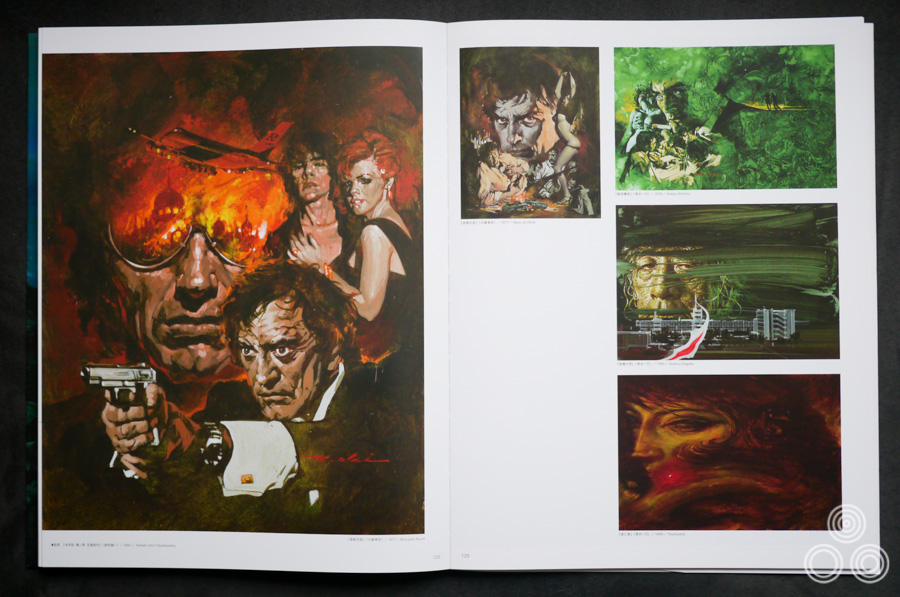
Several book covers that Noriyoshi Ohrai illustrated, shown in the exhibition catalogue. These were all on display in the museum.
1972 (Showa 47)
Formatted the Hayakawashobõ edition of Sakyō Komatsu’s ‘Fukkatsu no Hi’ [8] Ohrai was subsequently responsible for formatting many of Komatsu’s works.
Main works (published):
‘Classroom of the senses / carnality classroom’ – Soukun Kawakami (KK Bestsellers)
‘Who will inherit?’
‘Virus / Fukkatsu no hi’ – Sakkyo Komatsu (Hayakawa Shobo)
‘Wing’ – Sakyo Komatsu (Kadokawa Bunko)
‘Seton Animal Chronicles’ – Seton (Kodansha)
‘He’s a Werewolf! – Wolf Guy Separate Volume 1’ – Kazumasa Hirai (Hayakawa Shobo)
‘The Undaunted Foxwolf[9]’ – Haruhiko Oyabu (Tokuma Shoten)
1973 (Showa 48)
Moved to Miyazaki City, Miyazaki Prefecture. Had portrait paintings published in Kodansha’s ‘Gekkan Gendai’ (Modern Times Monthly)
Main works (published):
‘At the end of the Endless Stream’
‘Crystaline Star Cluster Kesshou Seidan’ – Sakyo Komatsu (Hayakawa Bunko)
‘Asu Dorobo tomorrow thief’
‘The Unknown Tomorrow’ – Sakyo Komatsu (Kadokawa Bunko)
Main works (film):
‘Japan Sinks’ (directed by Shiro Moritani)[10]
1974
Main works (published):
ESPY – Sakyo Komatsu (Hayakawa Shoten)
‘At the end of the Endless Stream’
‘Japan Diary of Goemon[11]’
‘Saigo no Onmitsu – The last spy/detective’ – Sakyo Komatsu (Hayakawa Bunko)
‘He’s a Werewolf!’
‘Ballad of the Wolf’
‘Makyou no ookami – lair of the werewolf’
‘Werewolf Front’
’ookami ha nakazu – Wolves don’t cry’ – Kazumasa Hirai (Shodensha)
‘Tiger from the Darkness[12]’
‘Cyborg Blues’ – Kazumasa Hirai (Kadokawa Shoten)
‘Shinsengumi – the new squad[13]’ – Tomoyoshi Murayama (Shinjinbutsuouraisha)
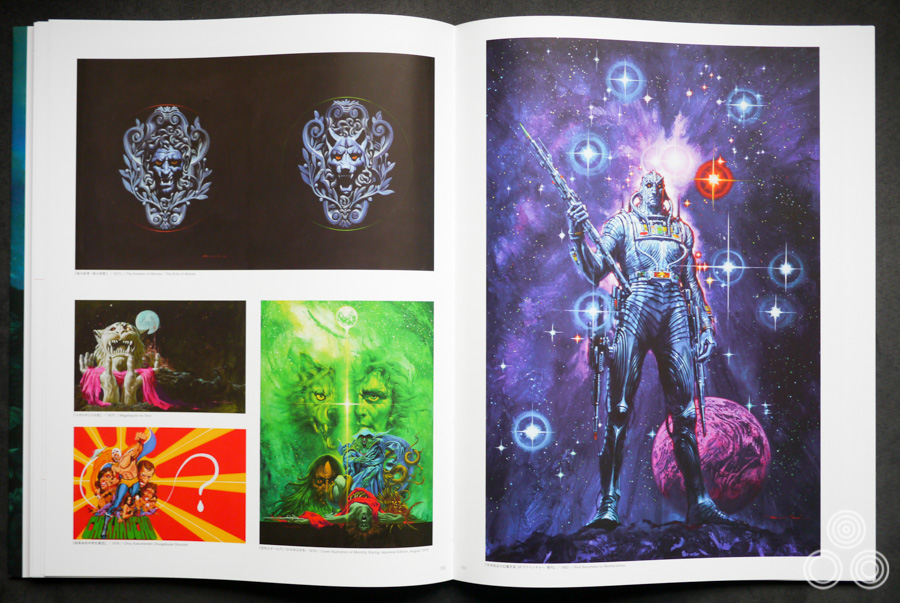
Several book covers that Noriyoshi Ohrai illustrated, shown in the exhibition catalogue. These were all on display in the museum. The one on the right was used as a large poster to advertise the exhibition.
1975
Main works (published):
‘Who is the monster?’
‘Android Snow’
‘Megalopolis Tiger’
‘Death Cloud Hunt’
‘Akumu no katachi – the shape of dreams’
‘akutokugakuen – The Academy of Vice’ – Kazumasa Hirai (Kadokawa Bunko)
‘Crest of the Wolf’
‘Wolf Requiem, Part 1, Part 2’ – Kazumasa Hirai
Shodensha,
kiba no jidai era of the fang[14]
‘Virus/day of resurrection’ – Komatsu Sakyo (Kadokawa Bunko)
‘Annals of the Three Kingdoms – all 10 vols’
‘Shin suikoden New water margin all 3 vols’
‘Shihon Taiheiki all 6 vols’
‘Shinsho Taiko ki – all 8 vols’
‘Miyamoto Musashi – all 6 vols’ – Eiji Yoshikawa (Rokko Publishing)
1976
Main works (published):
‘Mienai mono no katachi – the shape of things you can’t see’
‘Adventure in the Blue Cosmos’ – Sakyo Komatsu (Kadokawa Bunko),
‘Wolf world / world of the wolf?’
‘Wolf White Paper’ – Kazumasa Hirai (Shodensha)
‘Queen of the Evil Spirits’ – Kazumasa Hirai (Tokuma Shoten)
‘Super Revolutionary Junior High School Student Group’
‘Death Cloud Hunt 2’ – Kazumasa Hirai (Kadokawa Shoten)
1977
Main works (published) = ‘Secret Record of Naruto vols 1 and 2’ ‘New Tale of the Heike – all 12 vols’ (Eiji Yoshikawa) Rokko Publishing, ‘Who will inherit?’ ‘ESPY’ ‘The Gordian Knot’ ‘Onryou no Kuni Country of Vengeful Ghosts’ (Komatsu Sakyo) Kadokawa Bunko, ‘On a sunny May day’ (Komatsu Sakyo) Hayakawa Shobo
Main works (film) = ‘Tentacles’ – Japan Herald Films
1978 (Showa 53)
Provided ‘Star Wars’ illustrations for Tokuma Shoten Publishing’s ‘Ketteiban Supesu SF eiga no hon’ (‘Definitive Edition Book on Space Sci-fi Movies’). George Lucas saw this work and then asked Ohrai to design a poster for ‘The Empire Strikes Back.’
Main works (published) = ‘Gosenzosama Banzai Long live the ancestors’ ‘toki/ji? no kao the face of time?’ ‘the long road to God’ ‘The World inside the mirror’ (Komatsu Sakyo) Kadokawa Bunko ‘Death Cloud Hunt 3’(Hirai Kazumasa) Kadokawa Bunko ‘New Genma Wars’ (Hirai Kazumasa) Tokuma Shoten ‘Werewolf Angel parts 1 and 2’ (Kazumasa Hirai) Shodensha, ‘Mugoku shizuka ni korose – kill mercilessly and quietly[15] ‘ ‘Kyomu no hyouteki’ (Seiichi Morimura) Sponichi Publishing, ‘Requiem of the Black Leopard’ (Haruhiko Oyabu) Tokuma Shoten, ‘Contemporary Character Histories – Stalin’ ‘Churchill’ (Minoru Omori) Kodansha, ‘The Big Kill’ (Mickey Spillane) Hayakawa Shobo, ‘Collision’ (Spencer Dunmore) Hayakawa Shobo, ‘The World Set Free’ (HG Wells) Sanrio
1979
Main works (published) = ‘Contemporary Character Histories – Ho Chi Minh’ ‘Mao Zedong’ ‘Faisal’ ‘Castro’ (Minoru Omori) Kodansha, ‘Yellow Dog part 1 and 2’ (Juko Nishimura) Tokuma Shoten, Carve the Epitaph in Flames[16] (Azusa Katsume) Tokuma Shoten
清水一行 Ikkou Shimizu
小松左京 Sakyou Komatsu
平井和正 Kazumasa Hirai
Mickey Spillane
Jack Higgins
Len Deighton
1980 (Showa 55)
‘The Empire Strikes Back’ is released. Ohrai’s international version poster is displayed in cinemas. The same year, he produced 25 image boards for for the America crew[17] of the film adaptation of Sakyō Komatsu’s ‘Fukkatsu no Hi.’ Also, he started drawing the covers for Tokuma Shoten’s ‘Sci-fi Adventure’ (he continued doing this until December 1987). Won the Seiun Award[18] (Art category) at the Japanese Sci-fi Convention, where Japanese sci-fi fans gathered. His first book of paintings, ‘Noriyoshi Ohrai Illustrations’ was published by Tokuma Shoten.
小松左京 Sakyou Komatsu
平井和正 Kazumasa Hirai
清水一行 Ikkou Shimizu
西村寿行 Jukou Nishimura
Mickey Spillane
Films: The Empire Strikes Back
Virus (image illustrations)
1981 (Showa 56)
November – ‘Noriyoshi Ohrai Oil Painting Exhibition’ opens at the Aoki Art Gallery in Miyazaki City. An exhibition of 600 great oil painting works such as ‘Hakai sareru ningen’[19]
小松左京 Sakyou Komatsu
平井和正 Kazumasa Hirai
清水一行 Ikkou Shimizu
豊田穣 Jyou Toyoda
豊田有恒 Aritsune Toyota
Mickey Spillane
Len Deighton
Jack Higgins
Films:
Kemonotachi no atsui nemuri (The monsters’ passionate/fiery sleep)
Mad Max 2: The Road Warrior (cinema programme fold-out poster)
1982 (Showa 57)
Was responsible for the image illustrations for for Toei’s ‘FUTURE WAR year 198X’, and his second book of paintings, ‘Noriyoshi Ohrai year 198X Illustration Collection’ was published by Kodansha.
平井和正 Kazumasa Hirai
小松左京 Komatsu Sakyo
清水一行 Ikkou Shimizu
笠井潔 Kiyoshi Kasai
山田正紀 Masaki Yamada
岡本好古 Yoshifuru Okamoto
田中光二 Kouji Tanaka
谷恒生 Kousei Tani
鎌田敏夫 Toshio Kamata
奥宮正武 Masatake Okumiya
淵田美津夫 奥宮正武 Mitsuo Fuchida and Masatake Okumiya
堀越二郎 奥宮正武 Jiro Horikoshi and Masatake Okumiya
Sidney Sheldon
Jack Higgins
Len Deighton
Pierre Henri Clostermann
Mickey Spillane
Film: Miracle Master, Future War Year 198X, Star Wars (Japanese dubbed version, advanced ticket sales promotion poster)
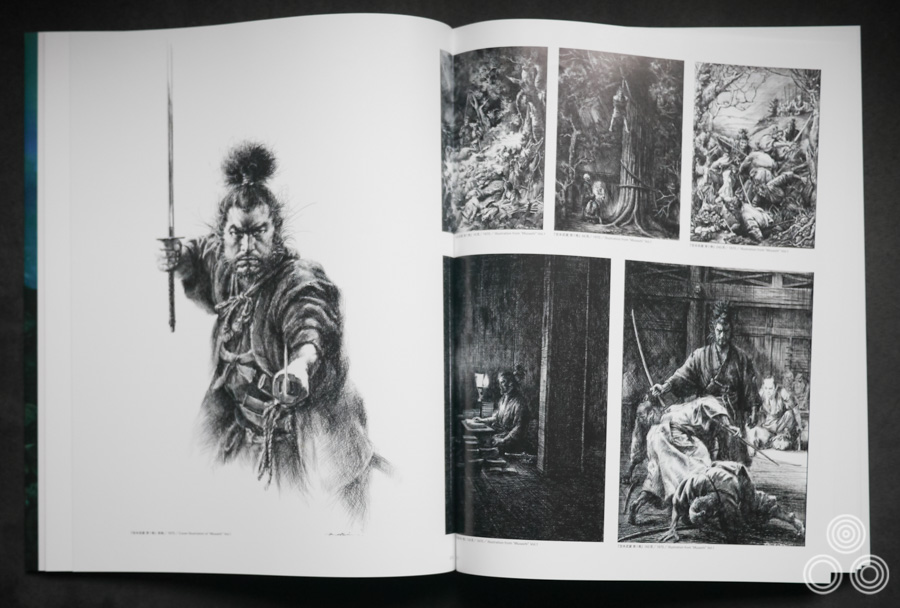
Several paintings by Ohrai that were painted for covers of books based on the life of Miyamoto Musashi. All covers were on display in the exhibition.
1983 (Showa 58)
Donates his ‘Hakai sareru ningen’, a work that he devoted 10 years to, to the Sendai History Museum in Satsumasendai City, Kagoshima Prefecture[20]. His third book of paintings, ‘Illustrations II – Phantasm Demon World’ is published by Tokuma Shoten.
Kazumasa Hirai
Ikko Shimizu
広岡達郎 Tatsuro Hirooka
高柳芳夫 Yoshio Takayanagi
鈴木健二 Kenji Suzuki
谷恒生 Kousei Tani
堀元美 Motomi Hori
奥宮正武 Masatake Okumiya
Jack Higgins
Arnold S Lott
Brian Francis Wynne Garfield
Robert Houghwout Jackson
Craig David Thomas
Len Deighton
Films:
Antarctica,
V the miniseries
1984 (Showa 59)
The Heisei version of ‘Godzilla’, eagerly anticipated by fans, is born. Ohrai created the promotional posters for 10 out of 13 Heisei Godzilla features.
Kazumasa Hirai
Ikko Shimizu
白浜芳次郎 Yoshijiro Shirahama
村上益男 Masuo Murakami
井沢元彦 Motohiko Izawa
高柳芳夫 Takayanagi Yoshio
田中光二 Tanaka Kouji
谷恒生 Tani Kousei
稲葉通宗 Inaba Michimune
蒲田敏夫 Kamata Toshio
ジミー佐古田 Jimmy Sakoda
笠井潔 Kiyoshi Kasai
豊田有恒 Aritsune Toyota
吉川英治 Eiji Yoshikawa
Rod Serling
Len Deighton
Robert Ludlum
Desmond Bagley
Jose Giovanni
Mickey Spillane
Spencer Dunmore
Jack Higgins
Isaac Asimov
Film:
Godzilla (Toei)
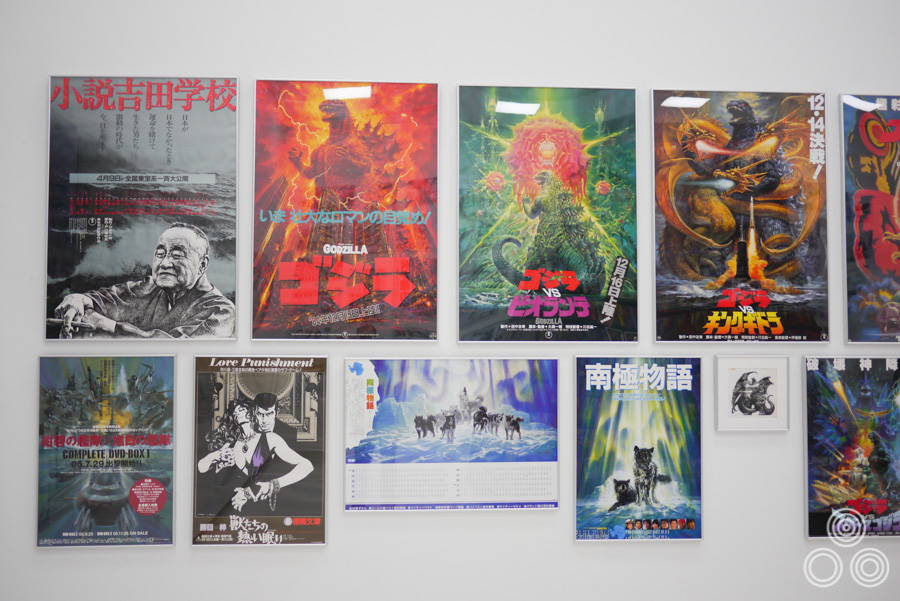
Some of the printed posters by Noriyoshi Ohrai that were displayed in the first room of the exhibition, including several B1s of Godzilla films.
1985
Kazumasa Hirai
Ikko Shimizu
Kiyoshi Kasai
高千穂遥 Haruka Takachiho
吉田俊雄 Toshio Yoshida
紀和鏡 Kyou Kiwa
井沢元彦 Motohiko Izawa
山田正紀 Masaki Yamada
夢枕獏 Baku Yumemakura
谷恒星 Kosei Tani
John Ball
Hammond Innes
DA Rayner
Desmond Bagley
SM Ulanoff
Oscar Cook
Len Deighton
Jack Higgins
Robert Bloch
Gerald Kersh
Robert Ludlum
Gerald Seymour
Alistair Maclean
Douglas Reeman
Cecil Scott Forester
Richard Matheson
Films:
The Goonies
Runaway Train
1986
平井和正 Kazumasa Hirai
小松佐京 Sakyo Komatsu
清水一行 Ikko Shimizu
高千穂遥 Haruka Takashiho
粕谷俊夫 Toshio Kasuya
安田義人 Yoshihito Yasuda
田中文雄 Fumio Tanaka
田中光二 Kōji Tanaka
豊田有恒 Aritsune Toyota
竹島将 Shō Takeshima
大藪春彦 Haruhiko Ōyabu
谷恒星 Kōsei Tani
紀和鏡 Kyō Kiwa
笠井潔 Kiyoshi Kasai
城戸禮 Rei Kido
門田泰明 Yasuaki Kadota
山田正紀 Masaki Yamada
志茂田景樹 Kageki Shimoda
Geoffrey Jenkins
Jack Higgins
CS Forrester
DA Rayner
Vernon Routh and others
August William Derleth
Hans Otto Meisner
Abraham Merritt
Anthony Theroux? True?
Elleston Trevor
WRD McLaughlin
Ray Russell
S Dunmore
Frank D Ferita
Fritz Lieber
K Pullman(?)
Algernon Blackwood
Gerald Seymour
Hammond Innes
H Searles
Rod Serling
Clarke A Smith
John Park
Robert Ludlum
Film: King Kong 2
1987
Kazumasa Hirai
Sakyo Komatsu
Ikkou Shimizu
志茂田景樹 Kageki Shimoda
竹島将 Shou Takeshima
谷恒生 Kousei Tani
勝目梓 Azusa Katsume
笠井潔 Kiyoshi Kasai
山田正紀 Masaki Yamada
紀和 鏡 Kyou Kiwa
Robert Ludlum
Philip McCutchan
Alistair Stuart MacLean
Morris Simon
Jack Higgins
Len Deighton
Edwin Grey
James Jones
Hammond Innes
Jonathan Ryder
Film: Shuto Shoushitsu
Game: Genghis Khan (Koei), Metal Gear (Konami)
1988 (Showa 63)
Ohrai’s 4th book of paintings, ‘Myths – The Beauties in Myths’ is published by Tokuma Shoten. Scored a big hit with the package designs for Koei Tecmo Games’ historical simulation game series ‘Suikoden’ and ‘Shinchou no Yabou’[21]
Ikkou Shimizu
竹島将 Shou Takeshima
藤原弘達 Hirotatsu Fujiwara
豊田有恒 Aritsune Toyota
笠井潔 Kiyoshi Kasai
紀和 鏡 Kyou Kiwa
大森実 Minoru Omori
鈴木健二 Kenji Suzuki
奥宮正武 Masatake Okumiya
Jonathan Ryder
Duane Unkefer
Robert Ludlum
Alastair Maclean
Film:
Above the Law
Mobile Suit Gundam – Char’s Counter-attack
Dragonquest Fantasia – video
Game:
Nobunaga’s Ambition: Tales of the Senoku Warlords
Suidoken: Tenmei no chikai; Ishin no Arashi
Metal Gear Solid
1989
Ikkou Shimizu
竹島将 Shou Takeshima
紀和 鏡 Kyou Kiwa
笠井潔 Kiyoshi Kasai
松井孝典 Takafumi Matsui
EH Simms
James Follett
Martin Caidin
K Macksey
Bob Langley
Wilbur Smith
Film:
Godzilla vs Biollante
Game:
Sangokushi II; Teitoku no setsudan
1990 (Heisei year 2[22])
Made image illustration for the Japanese tobacco industry’s ‘HOPE MY WAY’ campaign.
Ikkō Shimizu
Kiyoshi Kasai
Shō Takeshima
Kōsei Tani
海音寺潮五郎 Chōgorō Kaionji
Haruka Takachiho
松井孝典 Takafumi Matsui
Kyō Kiwa
JL Levinson
Daniel Easterman
JG Miller
Bob Langley
D Scott
Film:
Ronin gai
Games:
Daikōkaijidai – Age of Discovery
Nobunaga’s Ambition
Metal Gear 2 Solid Snake
1991
Ikkō Shimizu
渡辺洋二 Yōji Watanabe
遠藤昭 Akira Endō
森村誠一 Seichi Morimura
竹島将 Shō Takeshima
Michael Crighton
SW Mitchum
Films:
Godzilla vs King Ghidorah
Vampire Wars
Kagero
Games:
Operation Europe: Path to Victory
Ininido: Way of the Ninja
Royal Blood
1992
Ikkō Shimizu
Seichi Morimura
Jirō Horikoshi and Masatake Okumiya
Eiji Yoshikawa
Jack Higgins
Films:
Oroshiya kokusuimutan
Godzilla vs Mothra
Games:
Genghis Khan II: Clan of the Grey Wolf
Epic of the Grand Regent
Nobunaga’s Ambition: Tale of the Conqueror
Gate of Souls
Sankokushi III (Annals of the Three Kingdoms 3)
1993
Ikkō Shimizu
George Lucas (Young Indy Jones)
Seichi Morimura
Masatake Okumiya
須藤朔 Sesaku Sudō
Film:
Godzilla vs Mecha Godzilla
Games:
Age of Discovery III
Kamigami no daichi (land of the gods)
Kōryūki
War of Independence – Liberty or Death
1994
Ikkō Shimizu
Seichi Morimura
Jack Higgins
RK Lochner
Dan Simmons
Film:
Godzilla vs Space Godzilla
Game:
Nobunaga’s Ambition: Chronicle of Soaring
Sankokushi IV
PTO 2
1995
Ikkō Shimizu
和田慎二 Shinji Wada
Dan Simmons
Michael Crighton
Film:
East Meets West
Godzilla vs Destroyer
Game:
Epic of the Grand Regent 2
1996 (Heisei 8)
Although he had gained his current position from accepting job challenges, Ohrai took the opportunity at age 60 to cut down on the number of illustration jobs he accepted and spend more time on oil painting.
Ikkō Shimizu
巌谷二三男 Fumio Iwaya
井沢保穂 Yasuho Izawa
Isaac Asimov
1997
Ikkō Shimizu
Yōji Watanaba
永井豪 Gō Nagai and Dynamic Pro
Jack Higgins
Isaac Asimov
George Lucas and Tamaki Hisao 田巻久雄 – Star Wars – New Hope p1 and 2
1998
Ikkō Shimizu
Masatake Okumiya
Yōji Watanabe
Gō Nasai and Dynamic Pro
RF Newcombe
Isaac Asimov
George Lucas and Toshio Kudo
Game:
Genghis Khan Aoki Ookami to Shiroki Mejika IV
1999
橋本衛 Mamoru Hashimoto
Keith Douglas
Dan Simmons
坪井平次 Tsuboi Heiji
Gregory Benford
2000
豊田穣 Jyou Toyoda
伊藤正徳 Masanori Ito
Michael Crichton
Dan Simmons
Jack Higgins
Greg Bear
Keith Douglas
Walter Cross
Film:
Komodo
Godzilla vs megaguirus
2001
山田正紀 Masaki Yamada
谷口裕貴 Yuuki Taniguchi
佐々木譲 Jyou Sasaki
Jack Higgins
Dan Simmons
Glen David Brin
Game:
Metal Gear Solid 2: Sons of Liberty
2002
朝松健 Ken Asamatsu
伊藤正徳 Masanori Ito
EE Smith
Dan Simmons
Gavin Lyall
2003
Gavin Lyall
EE Smith
2004
EE Smith
Gregory Benford
Greg Bear
Glen David Brin
Game:
Metal Gear Solid 3
2005
山田正紀 Masaki Yamada
Film:
Godzilla: Final Wars
2006
Sakyo Komatsu
Dan Simmons
Film:
Nihon Chinbotsu (Japan Sinks)
2007
堀越二郎 奥宮正武 Jiro Horikoshi and Masatake Okumiya
中山雅洋 Masahiro Nakayama
Dan Simmons
2008
安田義人 Yoshihito Yasuda
横山信義 Yokoyama Nobuyoshi
Samuel W Mitcham
2009
福井晴敏 Harutoshi Fukui
山田正紀 Masaki Yamada
Dan Simmons
2011 (Heisei 21)
May – suffered a stroke. His recuperation has continued since then.
2013 (Heisei 25)
November – won the Miyazaki Prefecture Culture Prize, arts category.
2014 (Heisei 26)
February – ‘Noriyoshi Ohrai – THE ILLUSTRATOR’ opens at the Miyazaki Art Centre, Miyazaki City. The first national large-scale exhibition of his works.
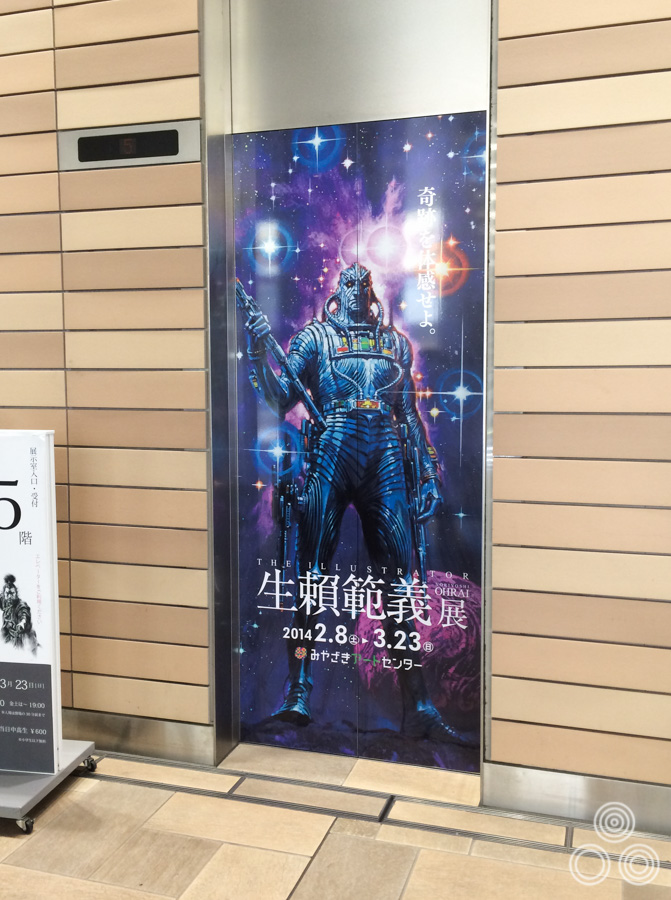
A large poster advertising the exhibition that covered doors to a lift leading up to Miyazaki Art Center.
Purple Page (summary):
‘If you think about the wondrous colour scheme of cell biology, whatever colours may be in outer space won’t seem strange.’ – message to the Noriyoshi Ohrai exhibition (quote from Ohrai).
This page talks about how Ohrai’s original illustration designs are born from the human body, and it repeats the story mentioned earlier in the biography of how he was able to use a special new microscope to see inside the human body when visiting a university for research, and how this experience had a big influence on his subsequent work.
When Ohrai was asked by a reporter why he based his Empire Strikes Back depictions of space on green colours, he said ‘There are lots of ultramarine colours in space. Green is best for bringing out depth. The interior becomes deeper. If you think about the wondrous colour scheme of cell biology, whatever colours may be in outer space won’t seem strange.’
———————————
Footnotes
[1] Showa era ran from December 25, 1926 to January 7, 1989, corresponding with the life of Showa Emperor Hirohito.
[2] Sendai City (川内市)in Kagoshima Prefecture no longer exists; not to be confused with present day Sendai City (仙台市)in Miyagi Prefecture.
[3] According to Kodansha’s own literature, the company was founded in 1909, which doesn’t match with 1966 being its 60th anniversary!
[4] I think Ohrai did the illustration on this English edition.
[5] As with other names, I’ve written his name in western order (given, surname), but in English translation he’s often credited as Edogawa Rampo, Japanese-style.
[6] At first I thought 一寸法師 (Issun Boushi) referred to a famous Japanese fairytale, often translated into English as ‘The Inch-High Samurai’ , but it refers to a 1926 story by Rampo, featuring one of his main recurring characters, translated as ‘The Dwarf’ . I don’t know if ‘The Dwarf’ is based on ‘The Inch High Samurai.’
[7] Japanese wikipedia says that Ohrai did the cover, frontispiece and illustrations for ‘Wolf Guy.’
[8] Literally means ‘Day of Resurrection’, but English title is ‘Virus’
[10] I’ve translated it as ‘Japan Sinks’ (that’s how Sakyo Komatsu’s original book was translated), but the English release of this film was called ‘Tidal Wave’
[11] http://www.amazon.ca/Japan-Diary-Goemon-Kadokawa-Bunko/dp/4041308054
[12] Japanese English title ‘From Darkness Tiger’
[13] http://en.wikipedia.org/wiki/Shinsengumi
[17] I’m not sure if this means a crew of Americans, or a Japanese crew working in America!
[19] Difficult to think of a punchy English translation – literally means ‘Human beings that get destroyed / will be destroyed’. Think it has a fatalistic ring to it, so perhaps something like ‘Humanity Doomed to Destruction’ might be apt?
[20] Satsumasendai City didn’t actually exist until 2004 (http://en.wikipedia.org/wiki/Satsumasendai,_Kagoshima). At the time it would have been Sendai City (see footnote 2)
[21] This series is still going – it’s called Dynasty Warriors on PS4 and PS3 etc
[22] Heisei is the current era. Started on 8 January 1989, day after the death of Emperor Hirohito, and the start of the reign of current Emperor Akihito.
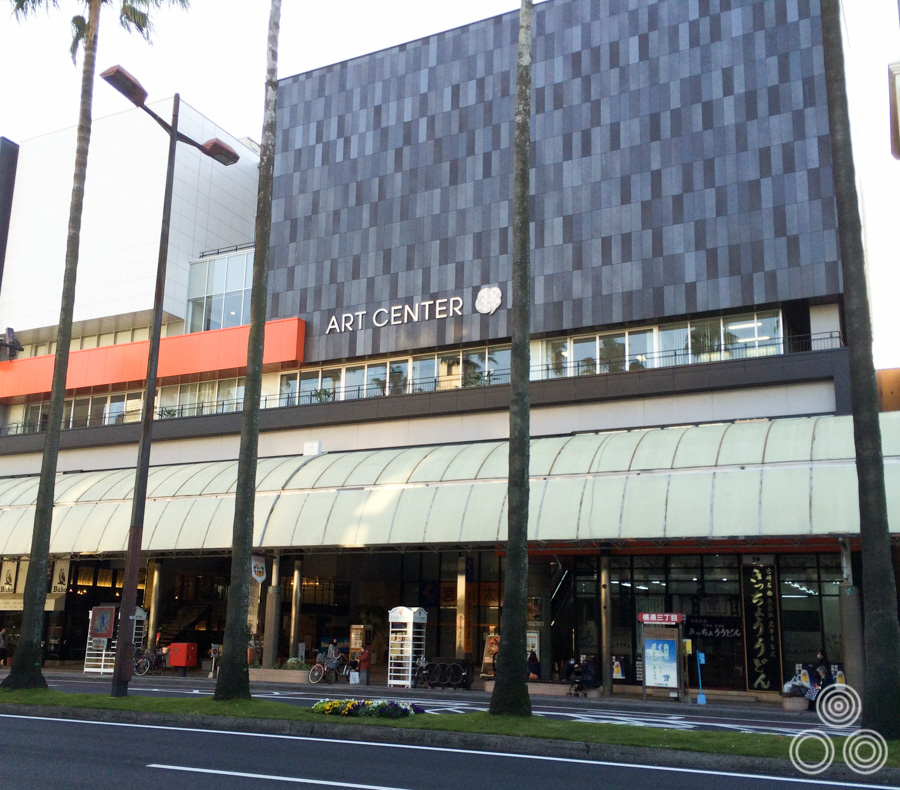
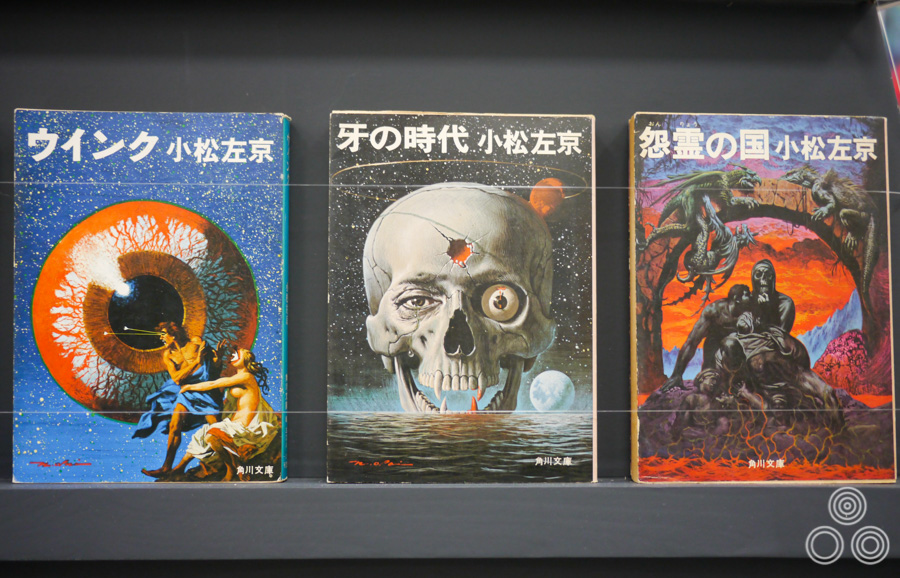
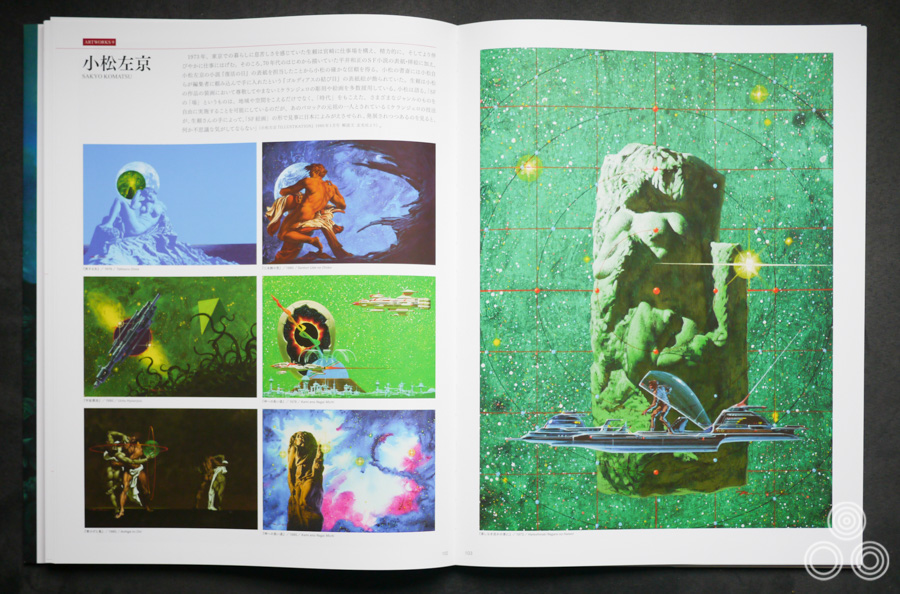
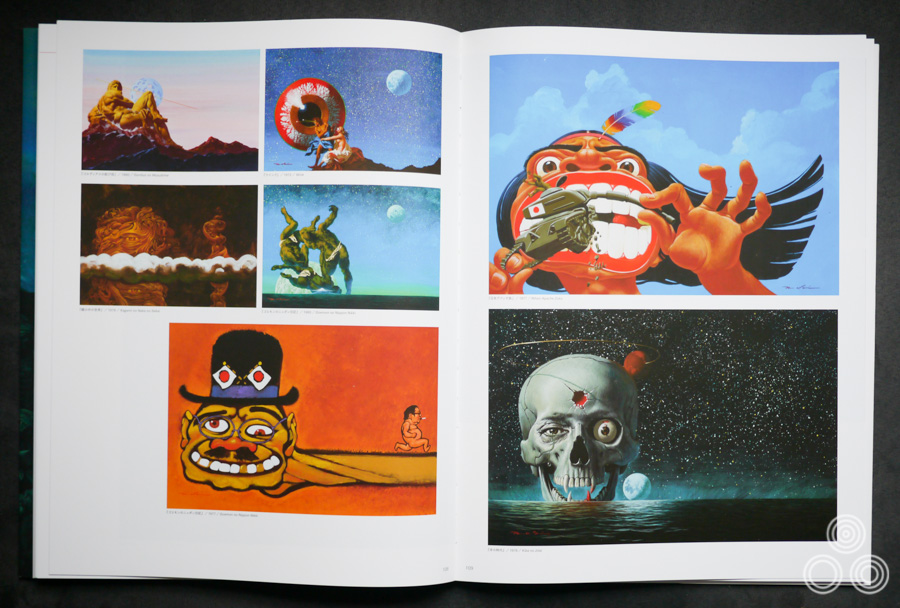
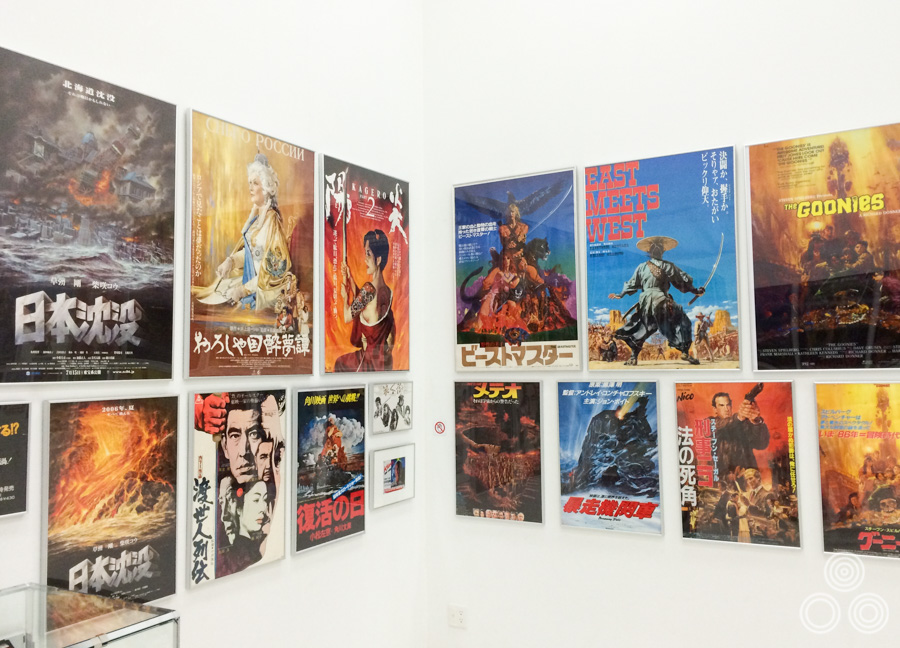
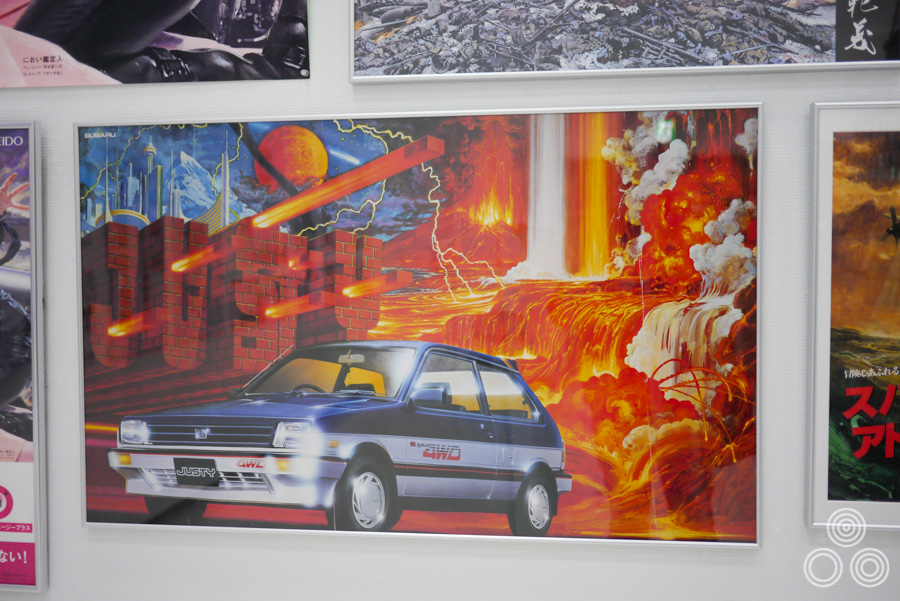
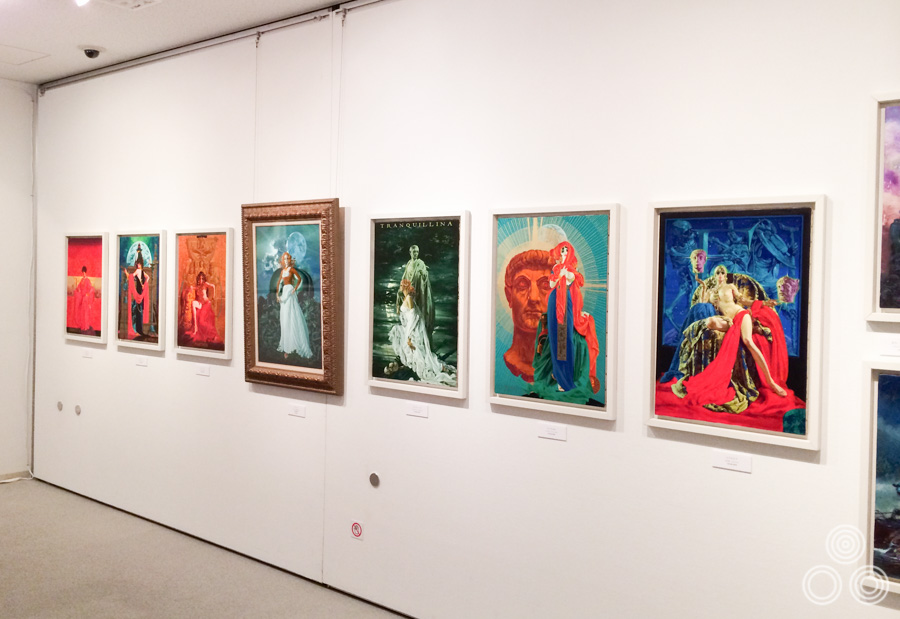
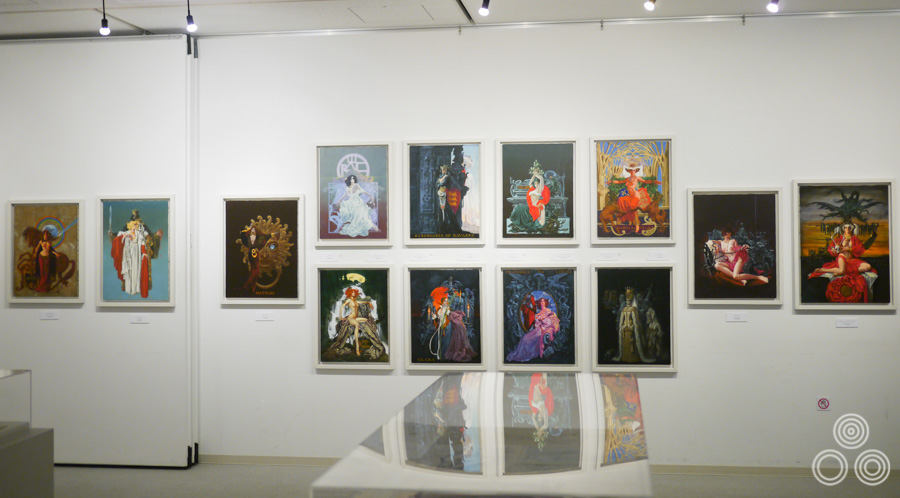
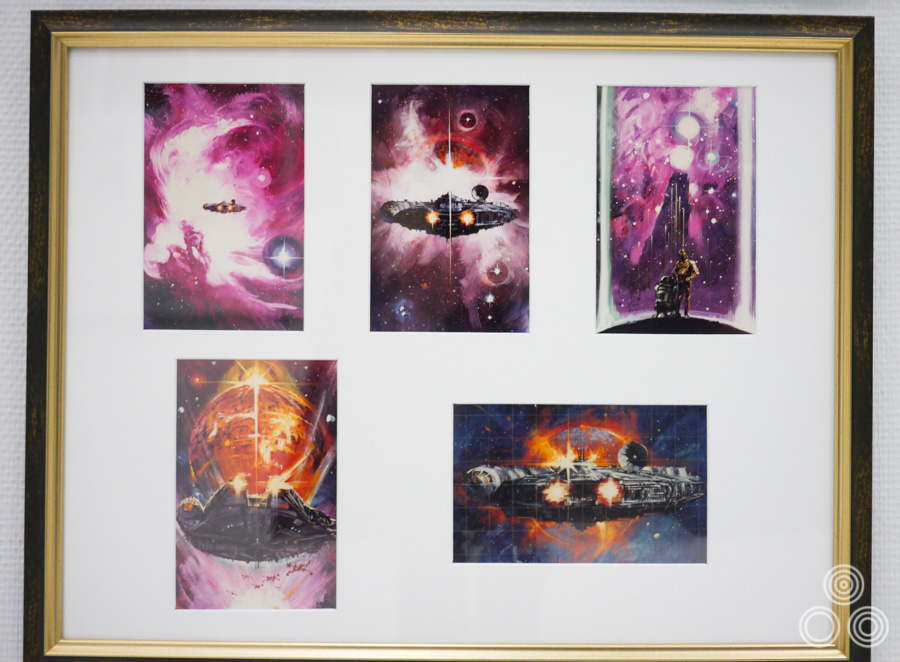
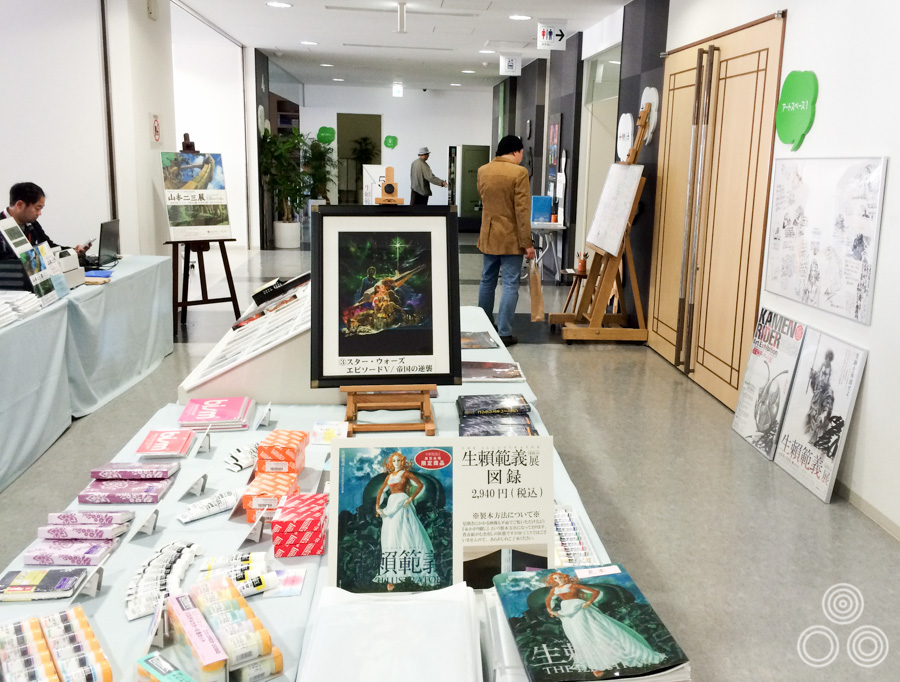
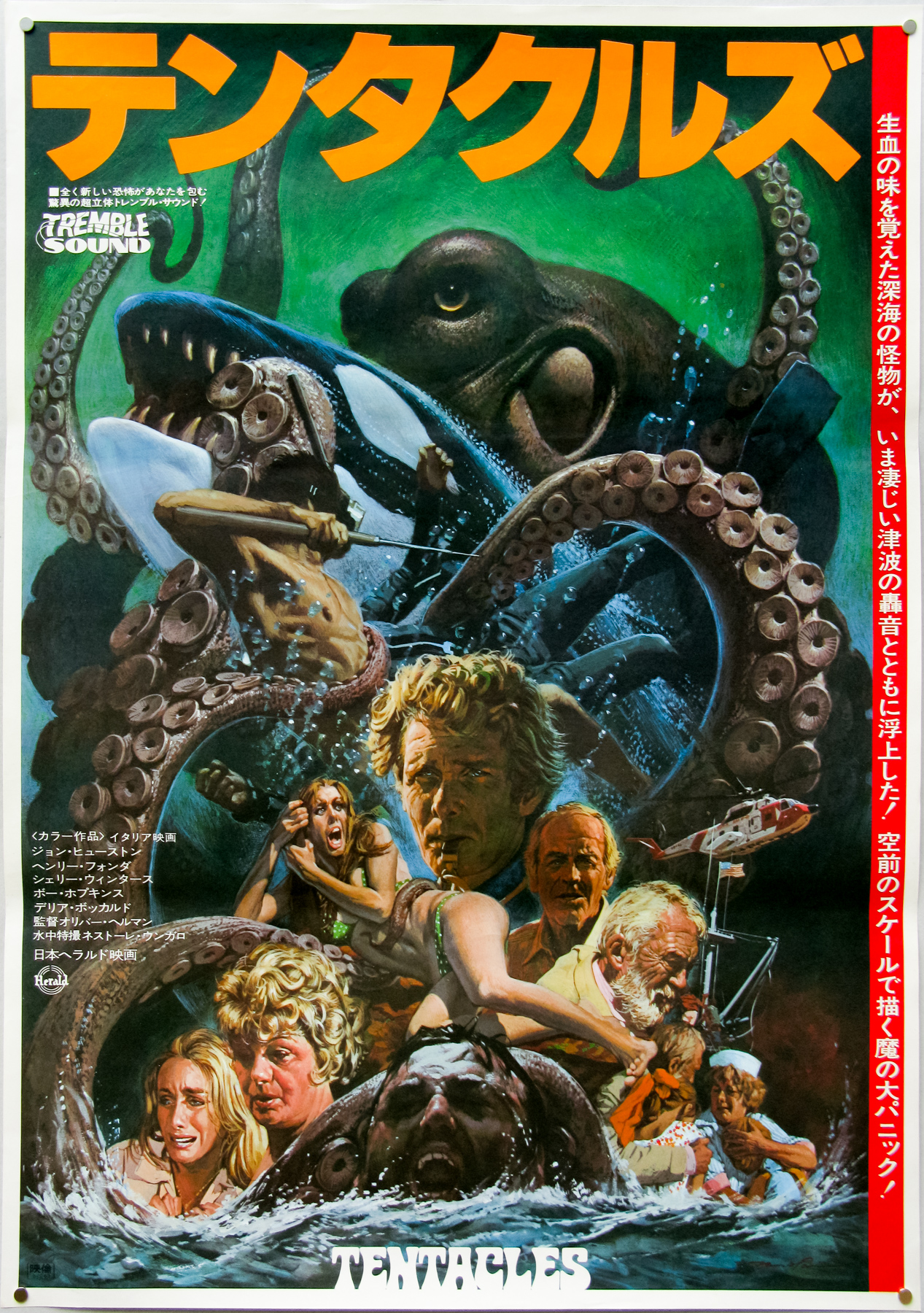

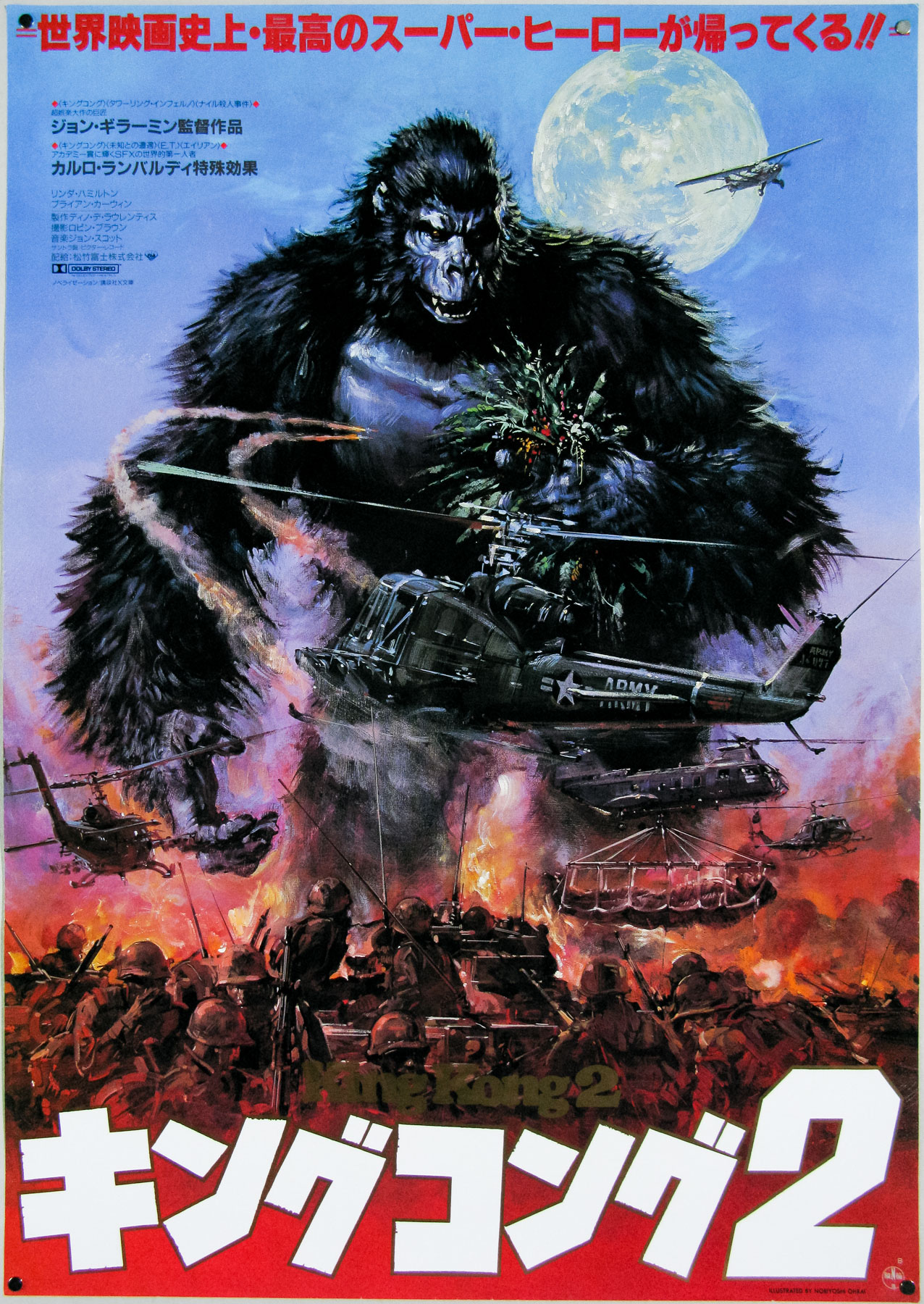
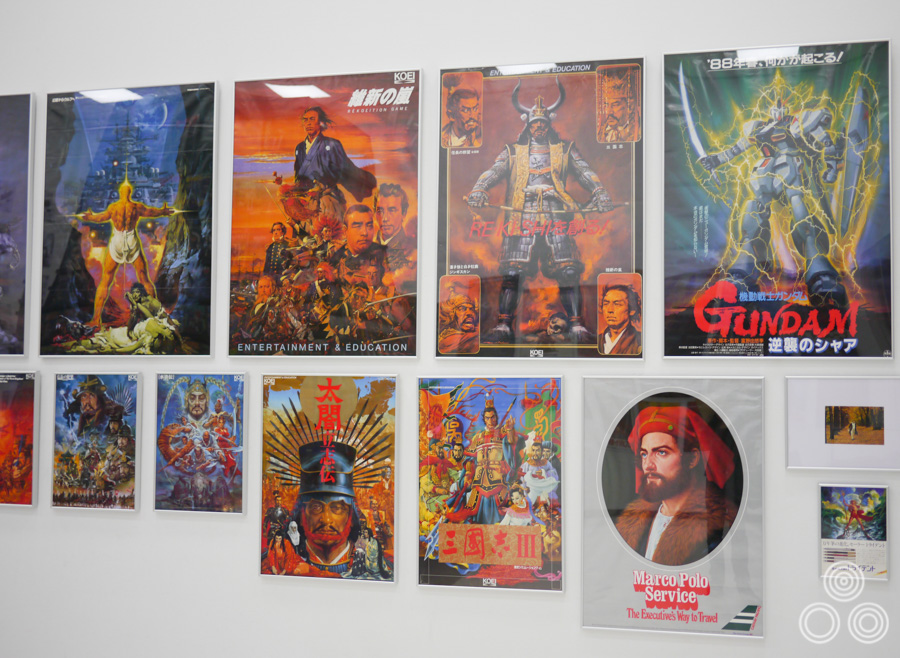
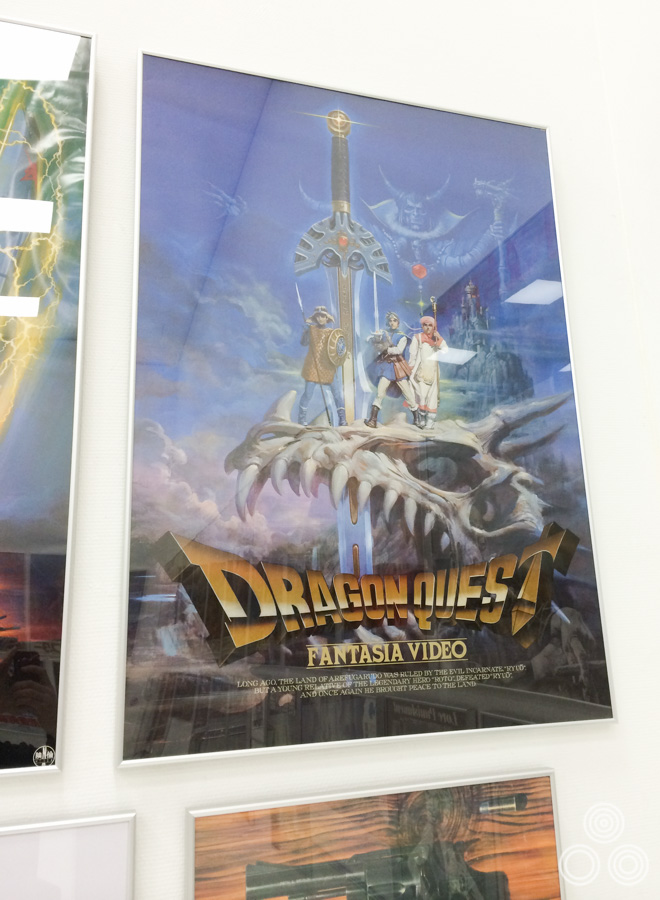
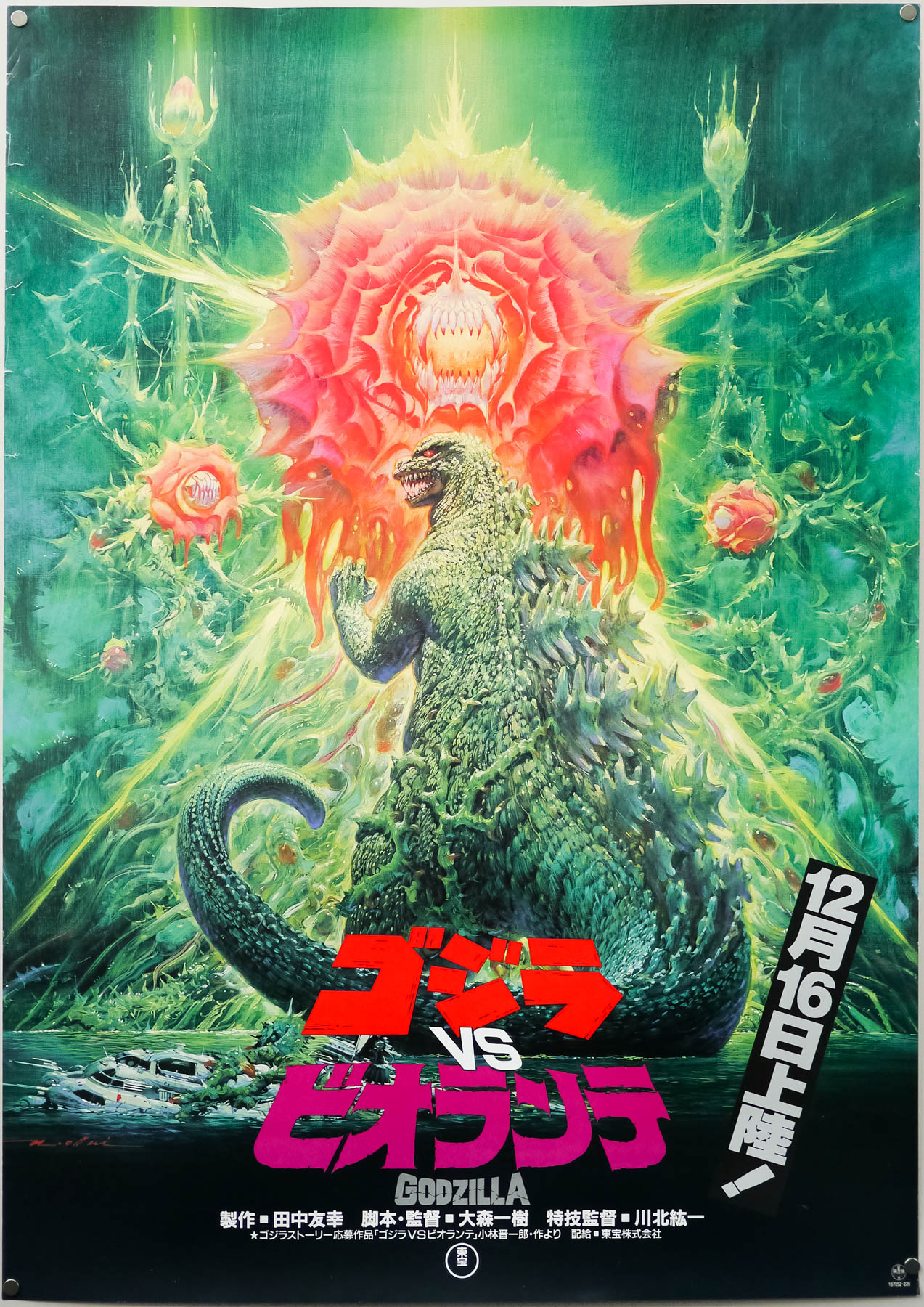
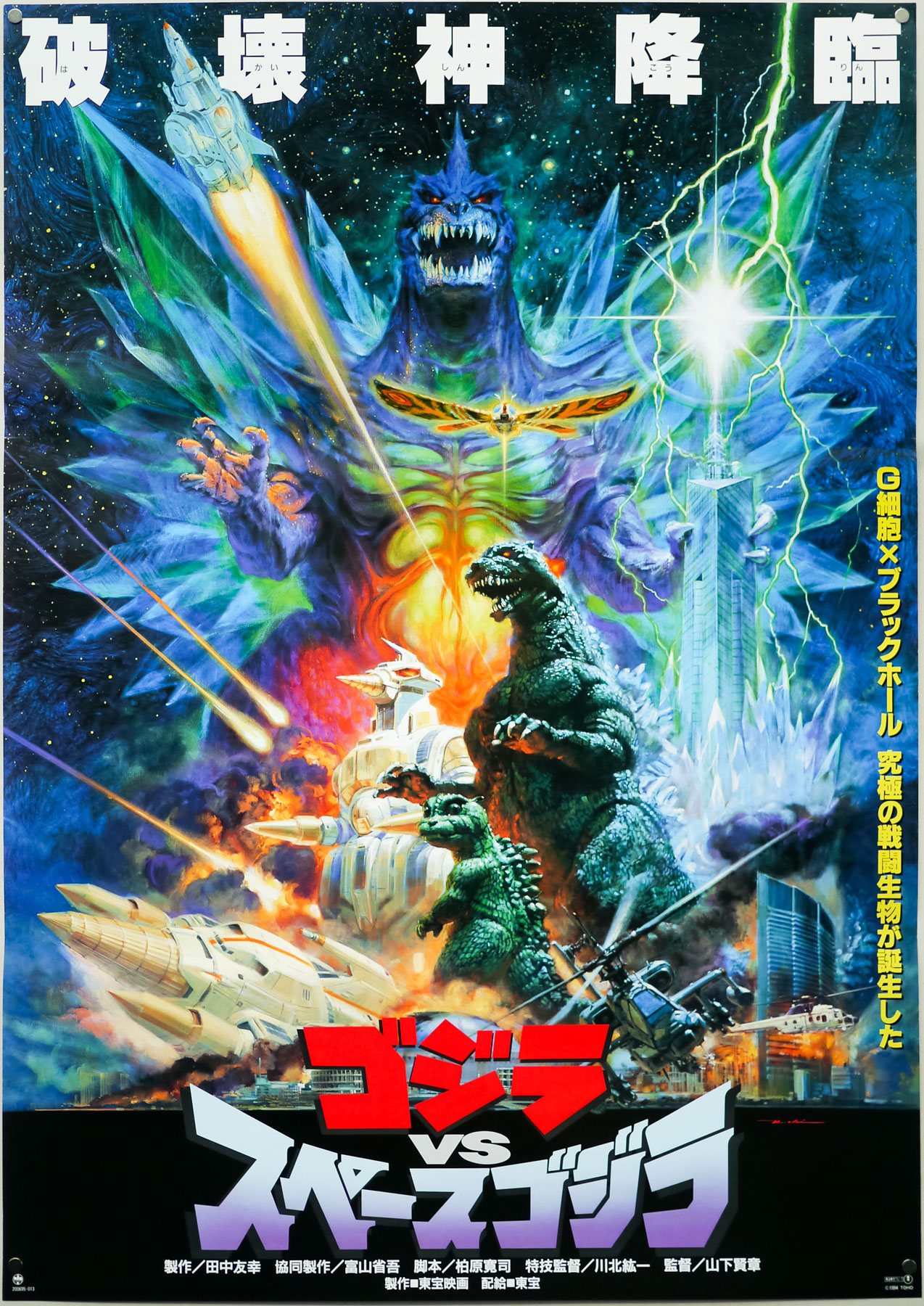
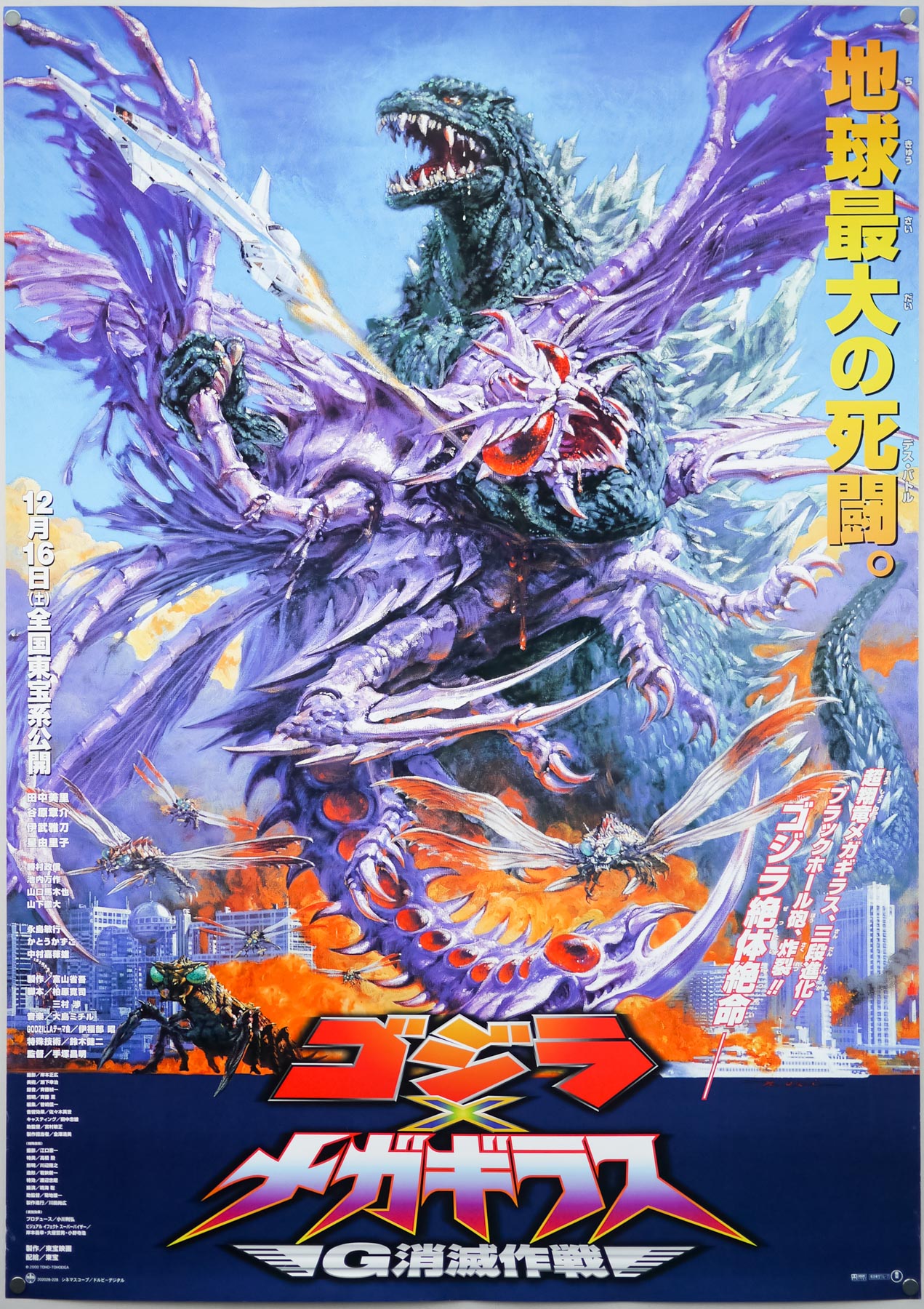
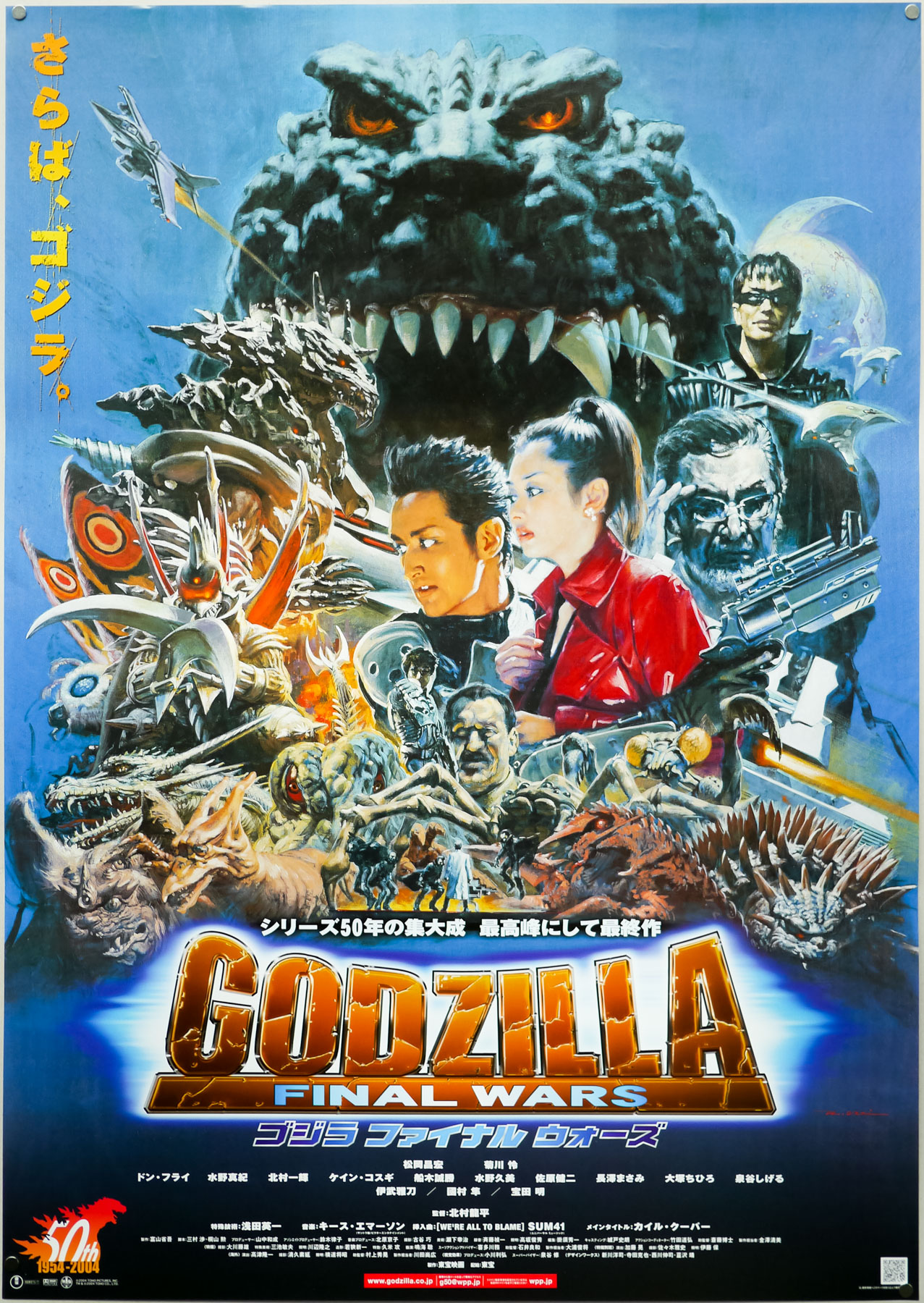
Can’t believe it took me this long to see this page, what a labor of love. Sad I’ll never likely see an exhibition like this. Have to be happy with my hopeful finding of some prints of some of my favorite works of his (not the easiest thing!). Thanks again for all.
You’re welcome. The pictures come from the exhibition catalogue and a few other sources, including my own collection of posters.
AWESOME !!! thank you for sharing this, the man’s work was gorgeous!!! RIP master Ohrai ! What book did you use in these images where you are showing his works? i want to get this book !!!
Can you find this exhibition book anywhere? These are incredible, thank you for sharing your experience!
Glad you like it, thanks.
Thanks for writing this up!
Wow. Such an amazing exhibition, wish I could have seen his work in person.